This project won the 2007 Victorian Coastal Award for Excellence – Water Quality
Known as the “Wetlands, Watch Them Grow” project, it is located on the old rifle range at the end of Reed Crescent in Wonthaggi.
Well worth a visit
A truly great asset for Wonthaggi & district. The reserve abuts the Wonthaggi Heathland. You can walk from Reed Crescent to Harmers Haven via bush tracks.
During spring, the heathlands host a spectacular display of wildflowers. The reserve is a bird watcher’s paradise being home to over 80 species of birds.
Walking tracks lead through this reserve linking the rugged ocean beach to the extensive coastal heathlands and scrubs.
Walk through the Wonthaggi Heathlands (around 3 km, 90 minutes return). Walks commence at the carpark on Chisholms Road, or Reed Crescent, in Wonthaggi.
Walk in the footsteps of our early miners — appreciate what’s on your doorstep.
History
The miners of the fledgling mining town of Wonthaggi, needed leisure time activity, so in 1911 five hundred acres (208 ha) were set aside by the Commonwealth Government for a rifle range. Situated on the south-western edge of the town, the Wonthaggi Rifle Club operated from 1911-1977. The area was gradually cleared, fenced and grazed. In the 1970s, it supported 40 head of cattle, a central red metal track to the butts, 3 dams and a couple of eucalypts. Many old-time locals will recollect the red flag denoting a shooting day, the route to the Back Beach, collecting lead bullets from the butts to make sinkers or mushrooming there.
Prior to this project, stock had direct access to the waterway, so terminating grazing had a direct improvement on the site’s water quality. Downstream locations are reaping the ecological benefits of this improved water quality.
In 2005, with the grazing lease rescinded and a grant from the Commonwealth Games Tree Planting Project to offset carbon produced by the Games’ preparation, the re-vegetation of the site began.
Led by Friends of Wonthaggi Heathland (FoWH), it commenced in spring 2005. The aim was to create a wetland on what was once a degraded piece of public land that had been grazed by stock for the last 100 years. Eight community groups have been actively involved in the project, planting 7000 trees and 12 000 wetland plants to date. Once the wetland was operational, the next stage was to incorporate walking tracks, interpretive signage, a bird hide and a car park.
Area Maps
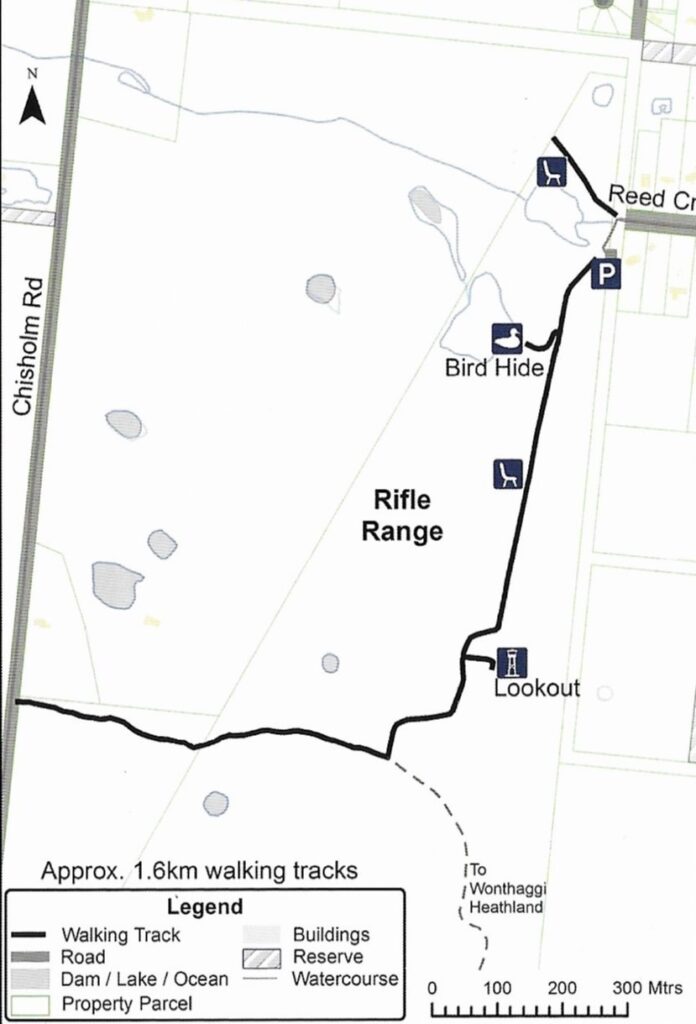
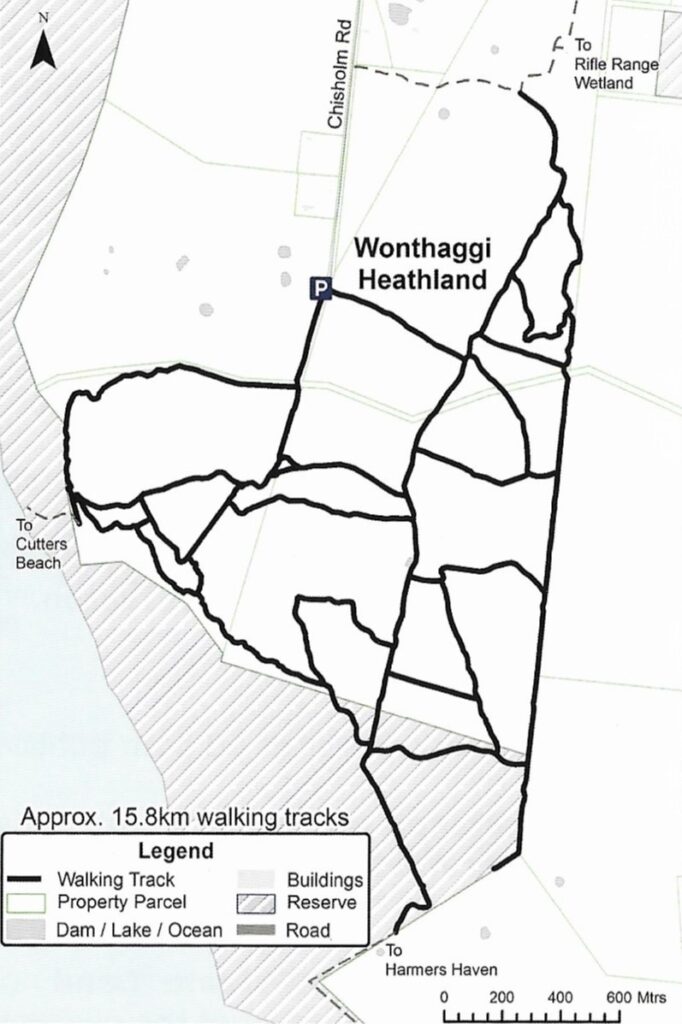
Project participants
Many community groups participated in this project: Bass Coast Shire Council, Parks Victoria, Cape Paterson Coastal Plains Landcare, Friends of Wonthaggi Heathland and Coastal Reserve (FoWH), Wonthaggi Seedbank & Nursey, South Gippsland Conservation Society, Pensioners’ Assoc., Greencorps, Conservation Volunteers Abroad and the general public on planting days.
Phase 1 – 2005
The area was to be a demonstration of direct seeding (Burford, Ripper and Mouldboard methods) on 23ha, using 40kg of indigenous seed, as well as 2,000 shrubs and trees planted on September 26, 2001? Take a look now… it’s changed a lot.
Phase 2 – 2006
With an Australian Government Community Water Grant in 2006, the second Stage began, wetlands sculptured by consultants Tony Brindley and Tony Dalla Rosa (ex Thaggi boy). Created was a large shallow wetland, frog pond and a deeper pool — to purify water enroute to the Powlett, to mitigate flooding and to provide habitat for flora and fauna. (Tony Della Rosa could remember as a boy making a tin canoe at the tip and rowing over these flooded paddocks to the Powlett.)
Phase 3 – 2007
Next came the planting of the wetlands with an Australian Government Envirofund Grant in 2007. This allowed a team to research / propagate / plant out the wetlands, the provision of education material (pamphlet, information board) and amenities (bird hide, paths, fencing, carpark, tracks). This project won the Victorian Coastal Awards for excellence in the water quality section in 2007.
Parks Victoria
Parks Vic has since built steps to access the butts — this affords an excellent view of the Rifle Range and the surrounding area.
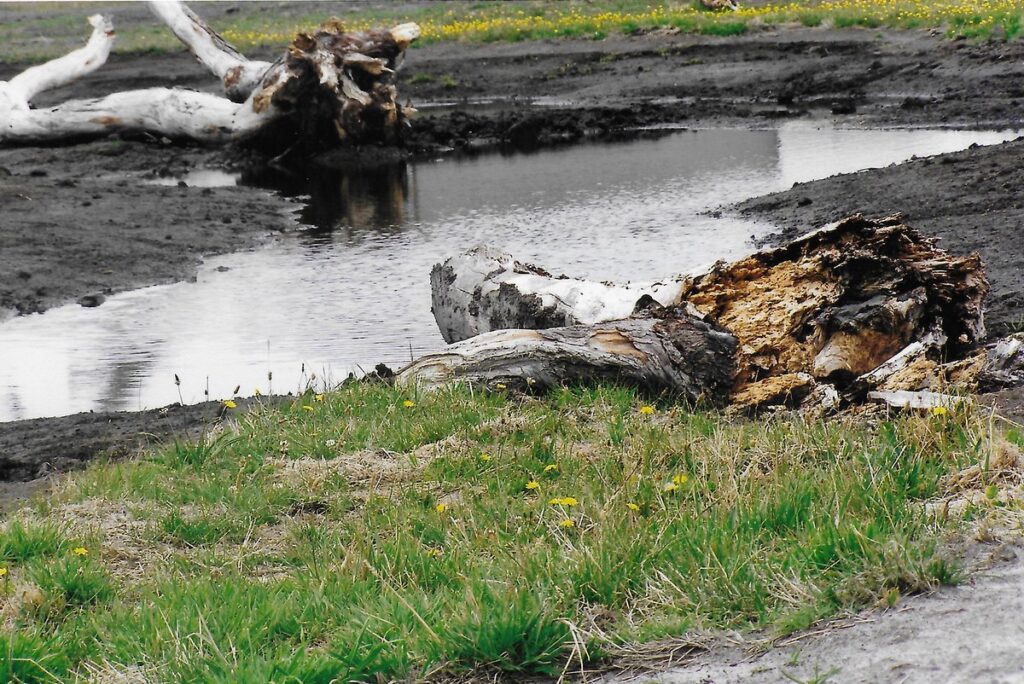
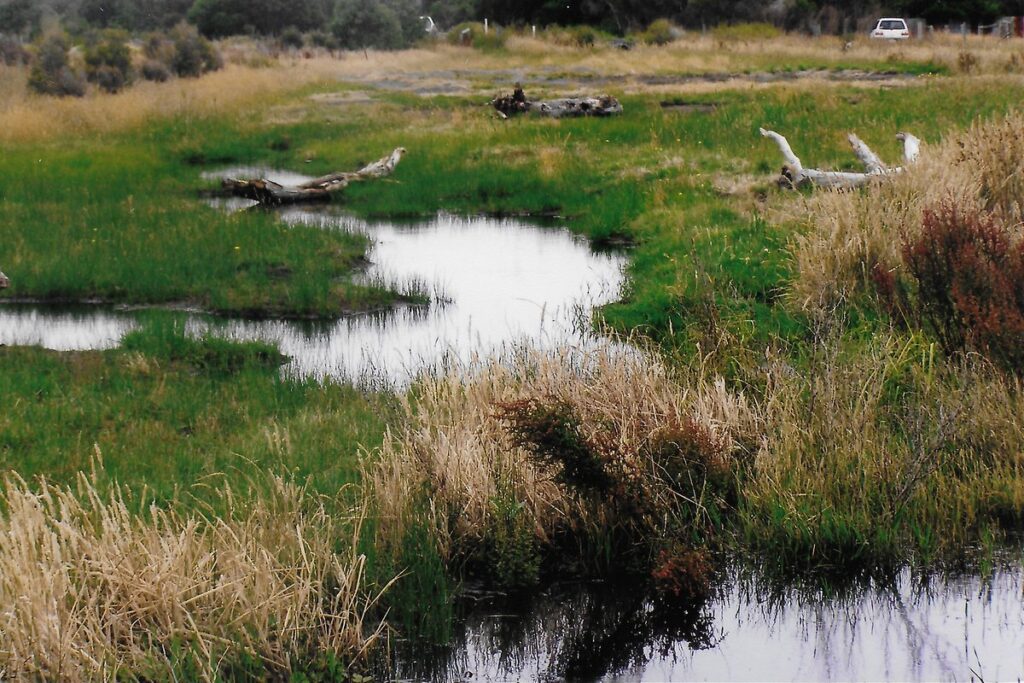
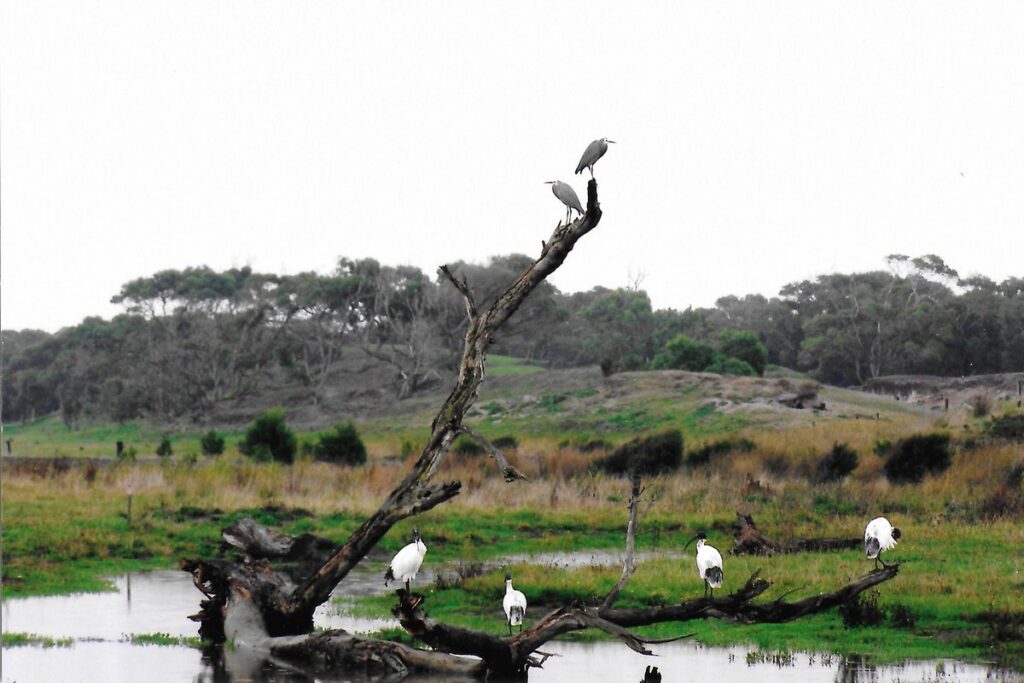
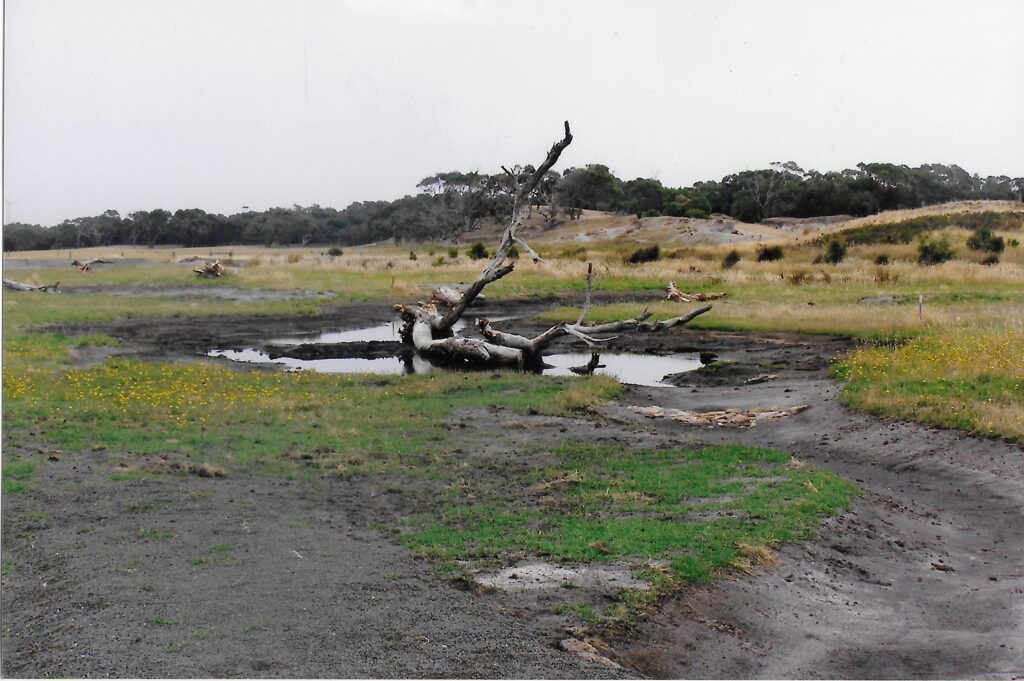
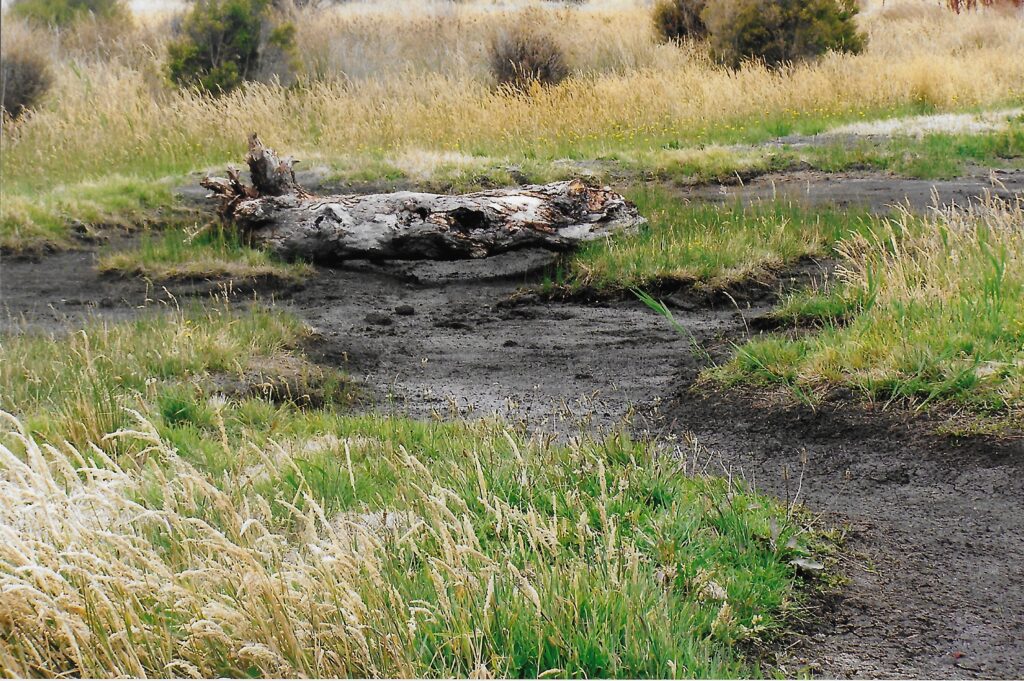
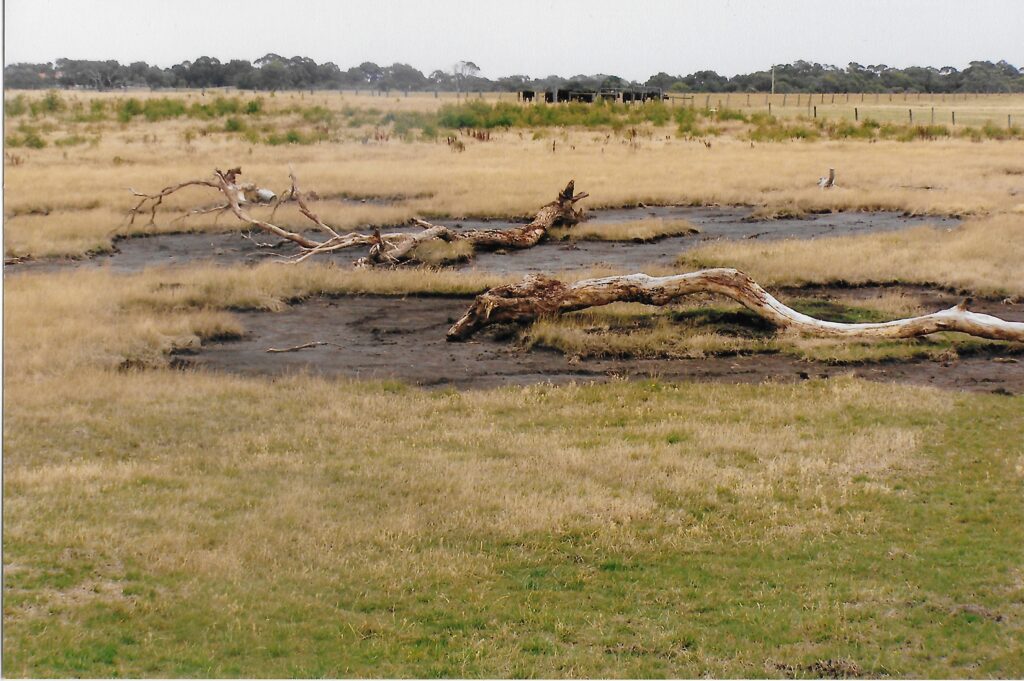
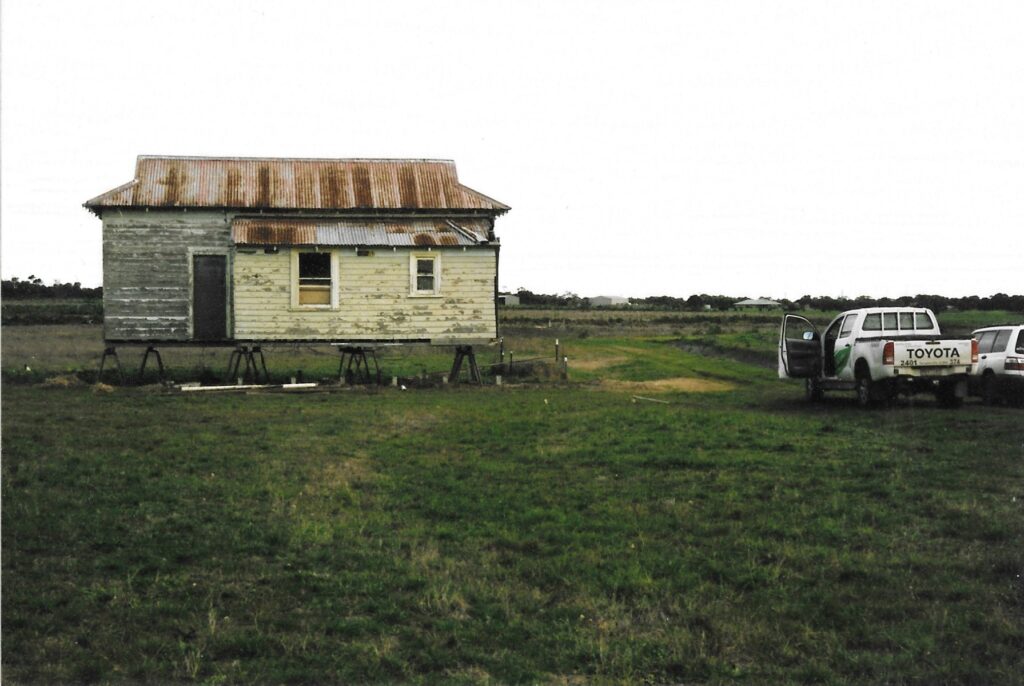
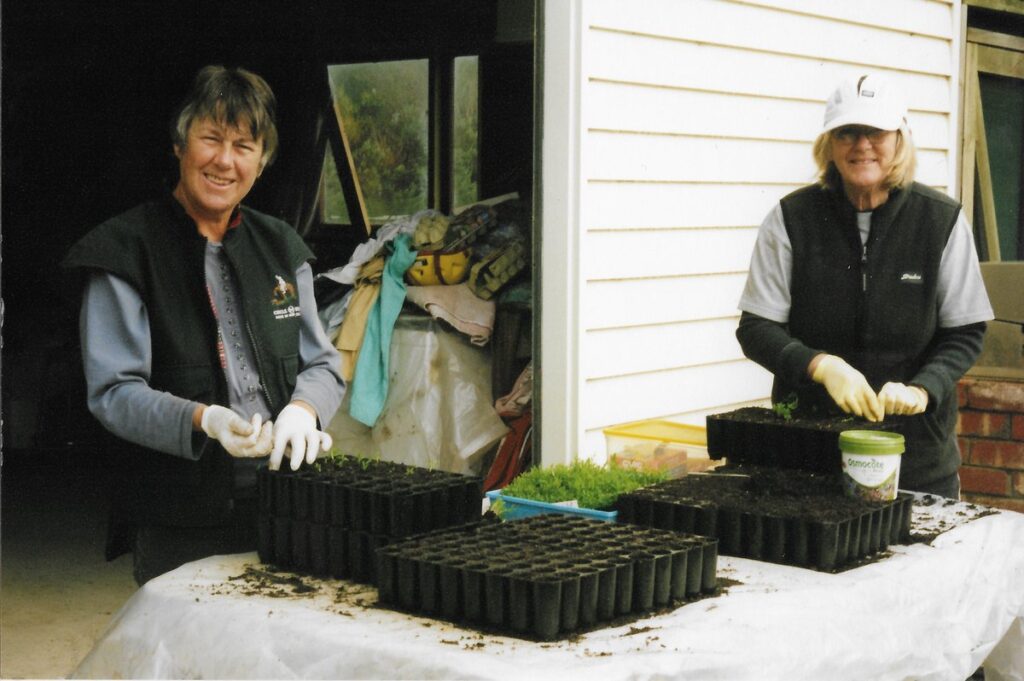
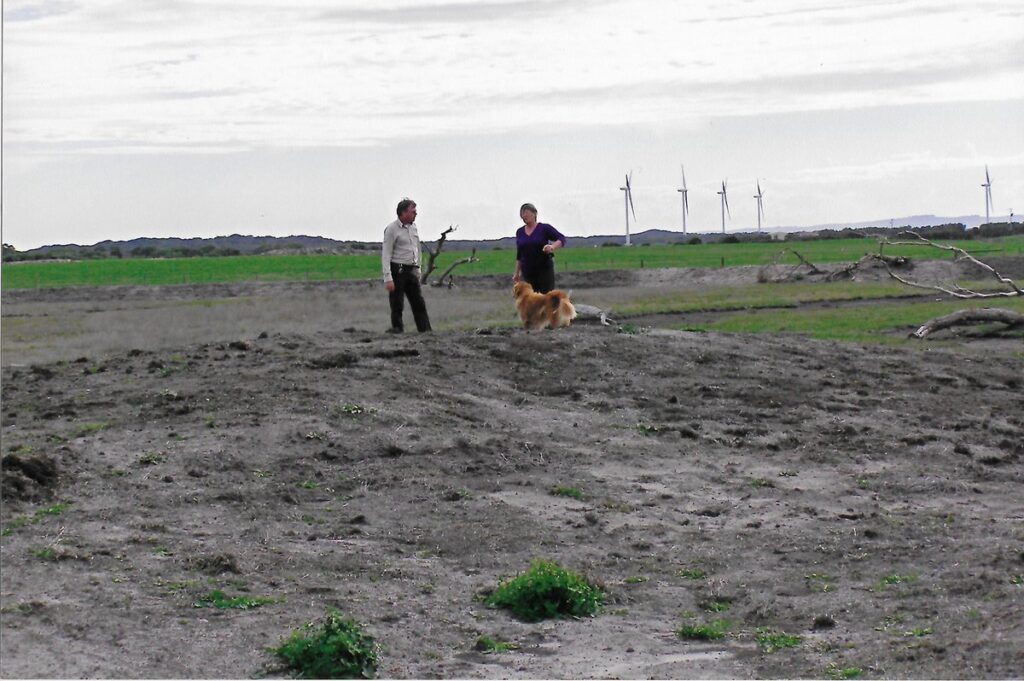
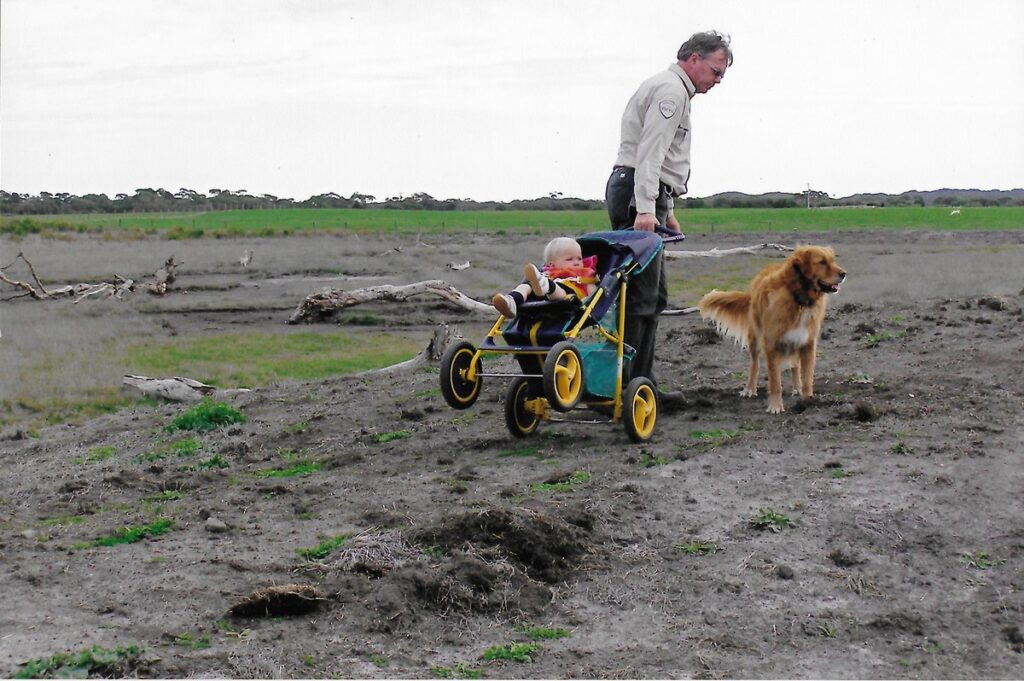
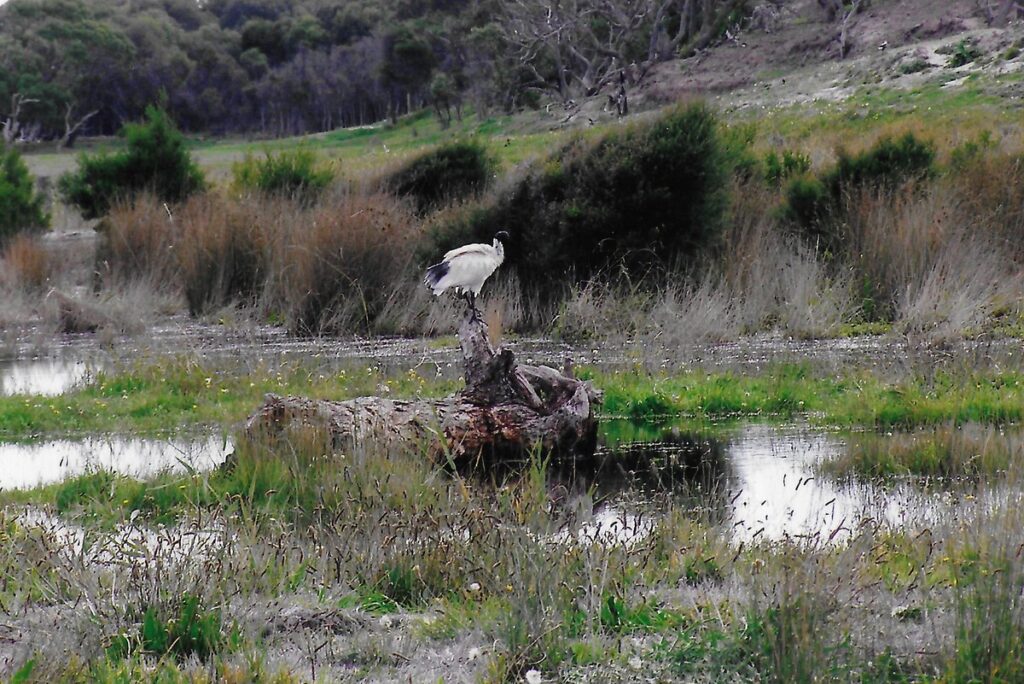
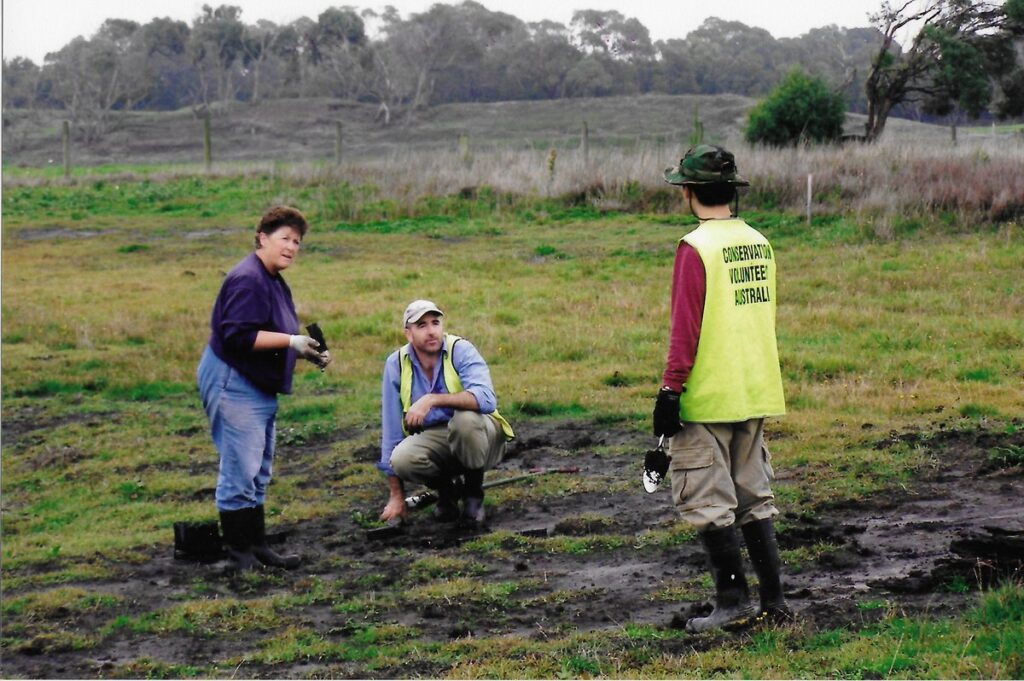

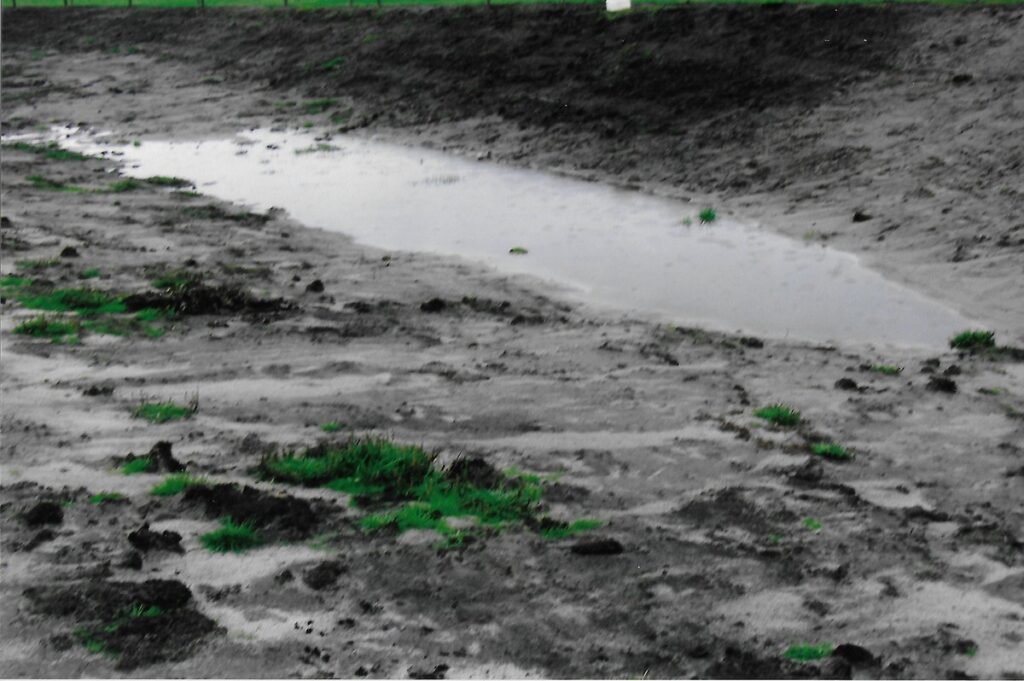
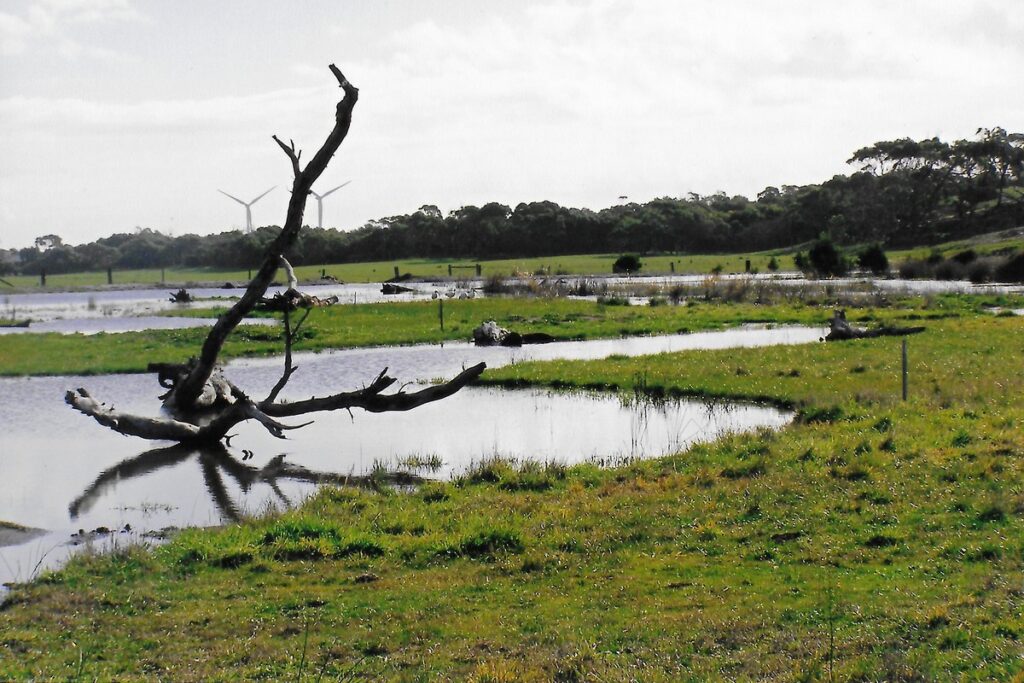
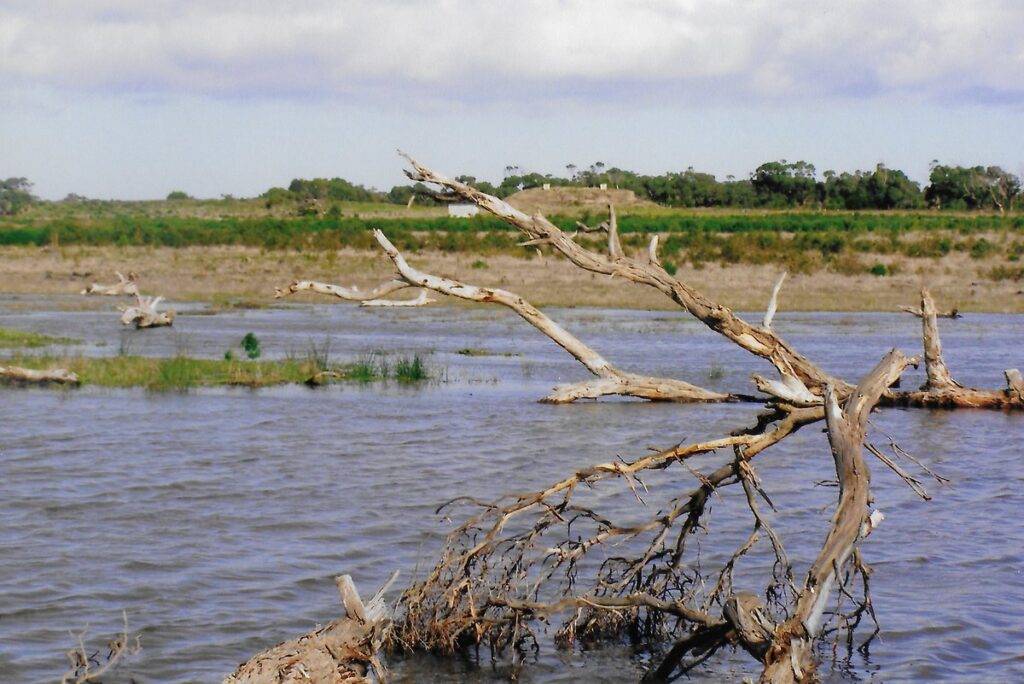
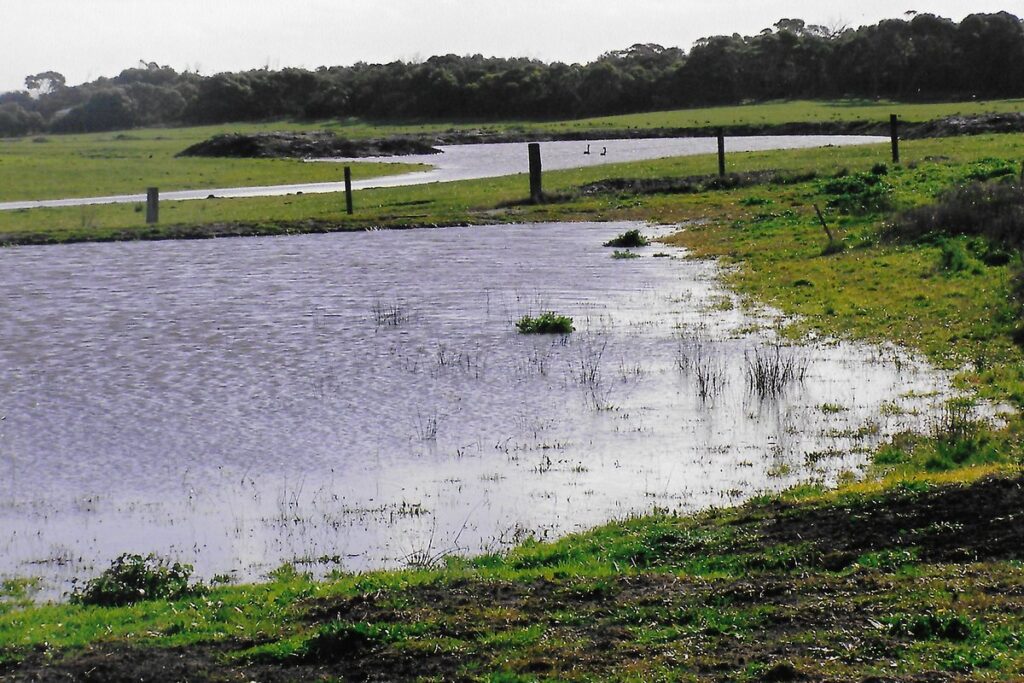

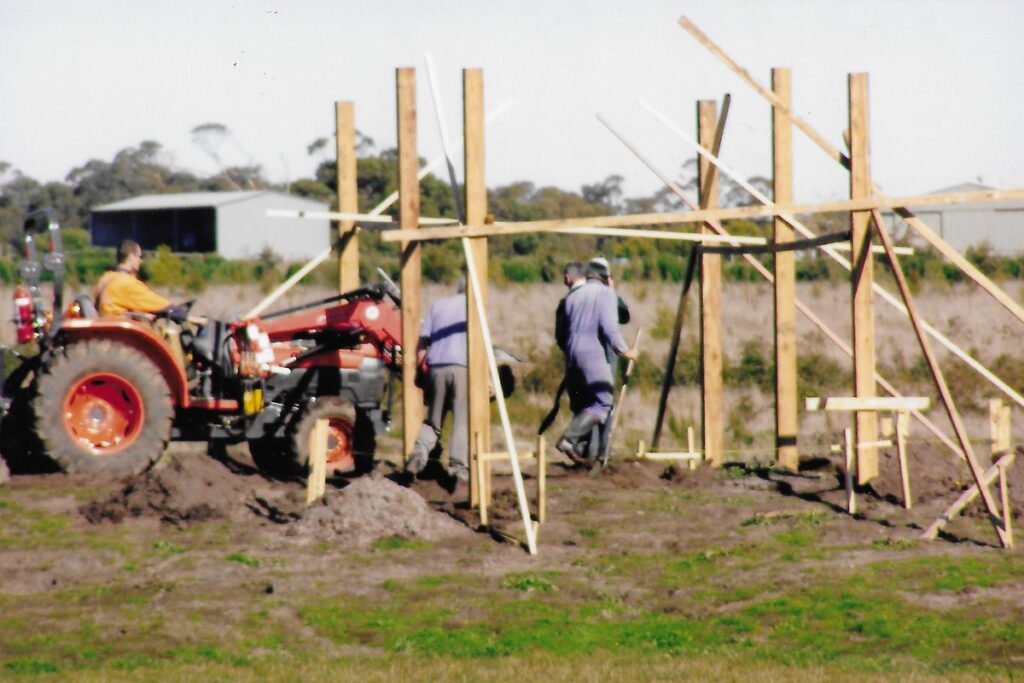
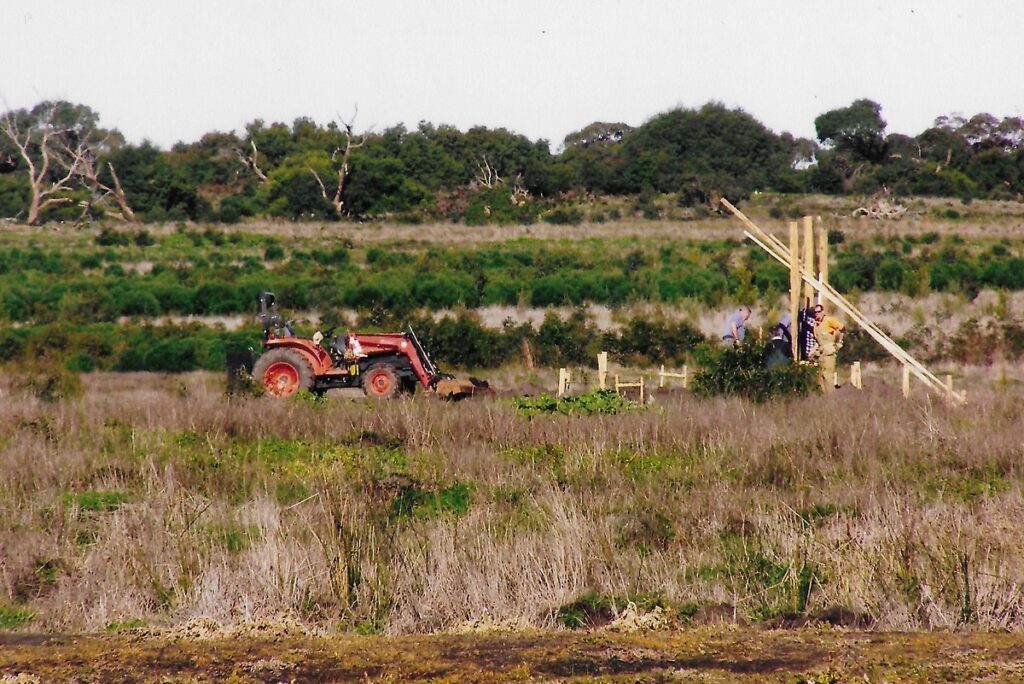
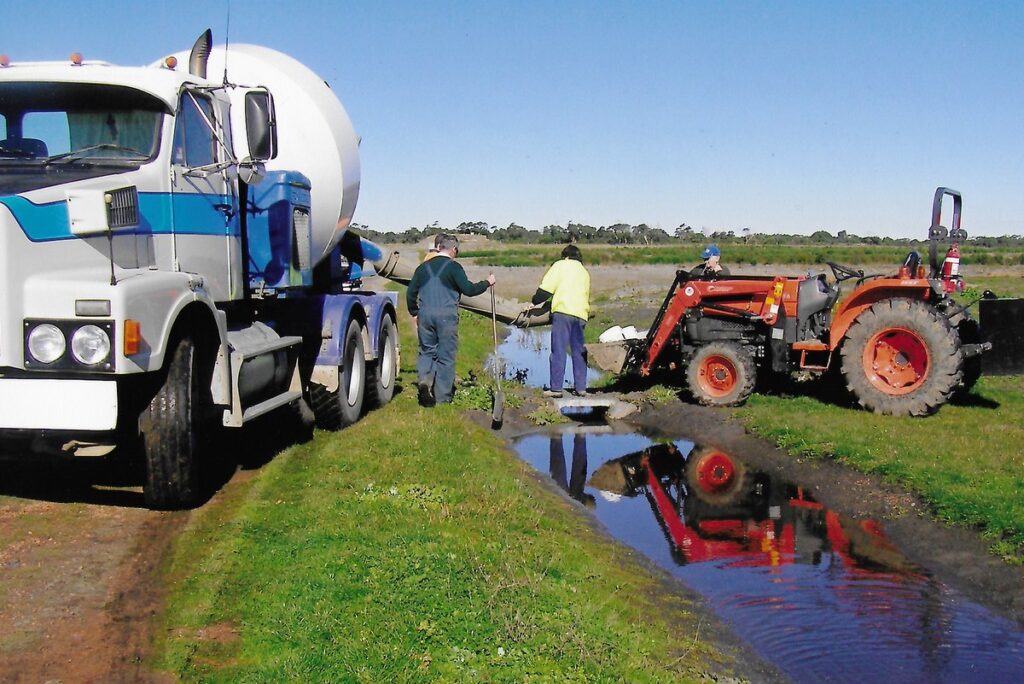
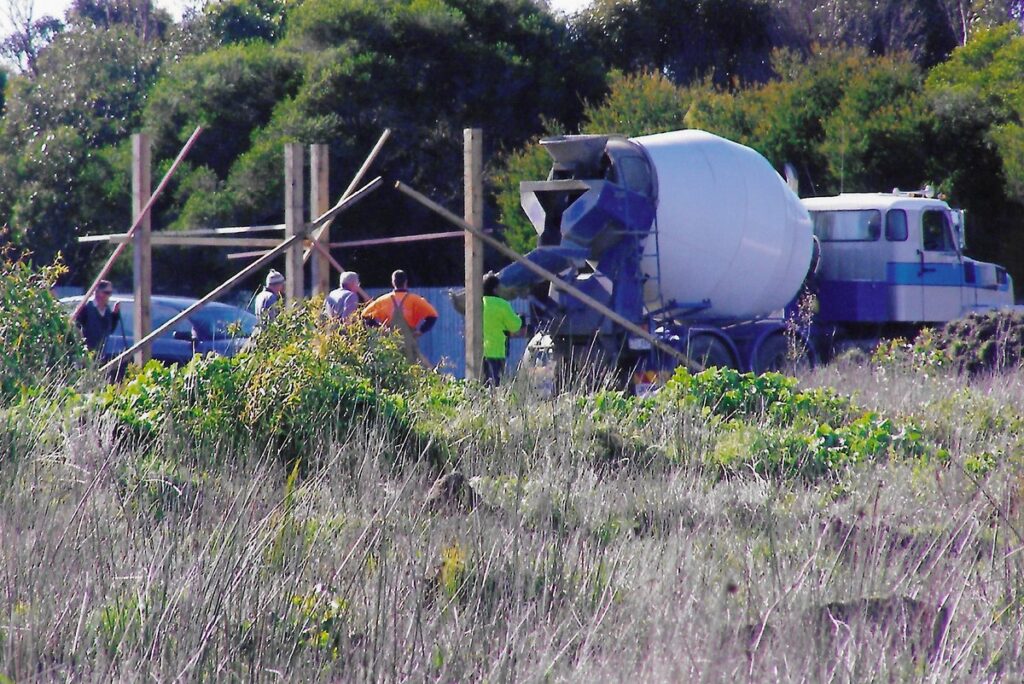
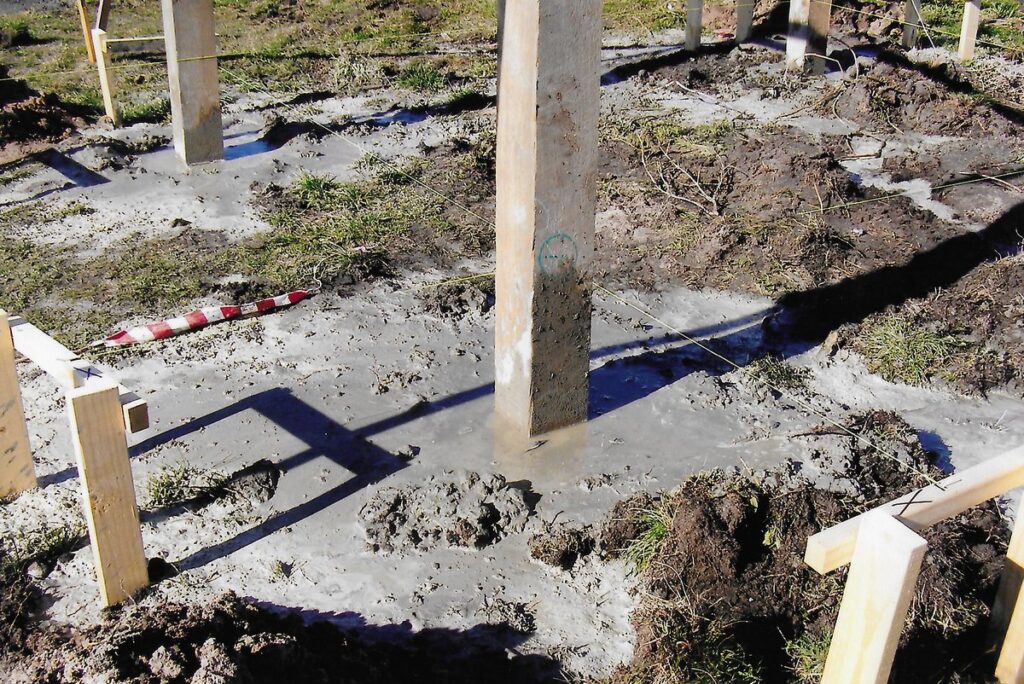
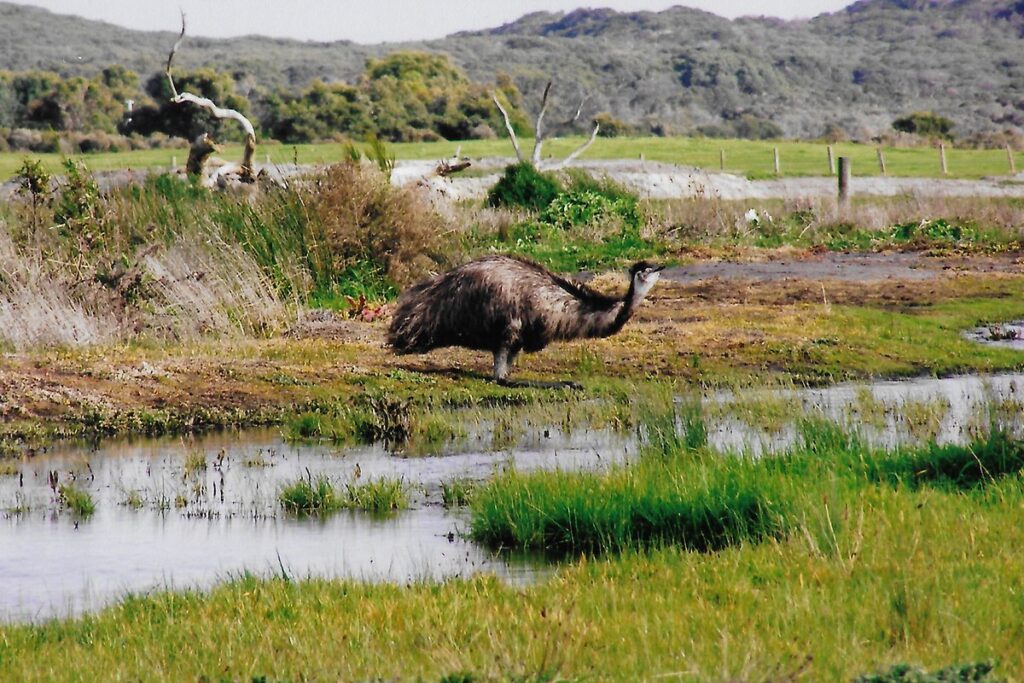
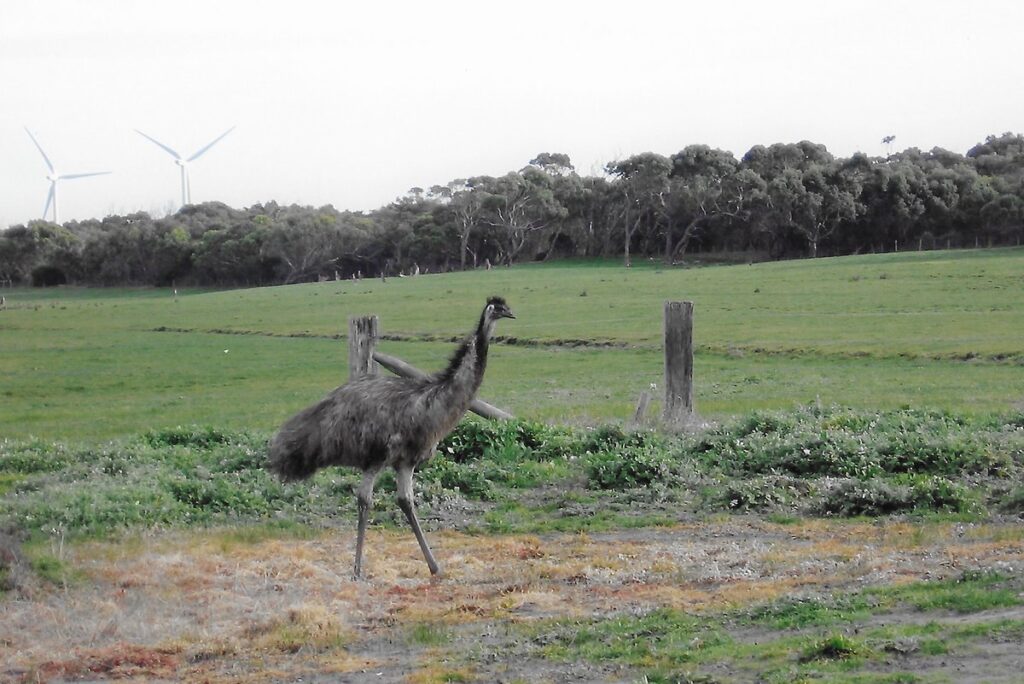
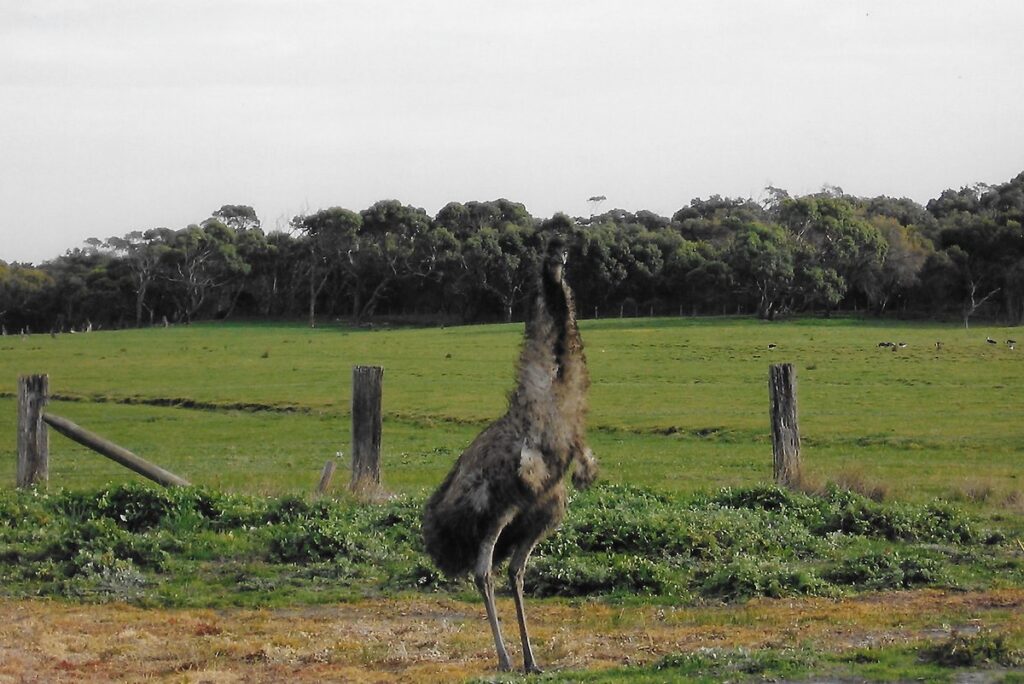
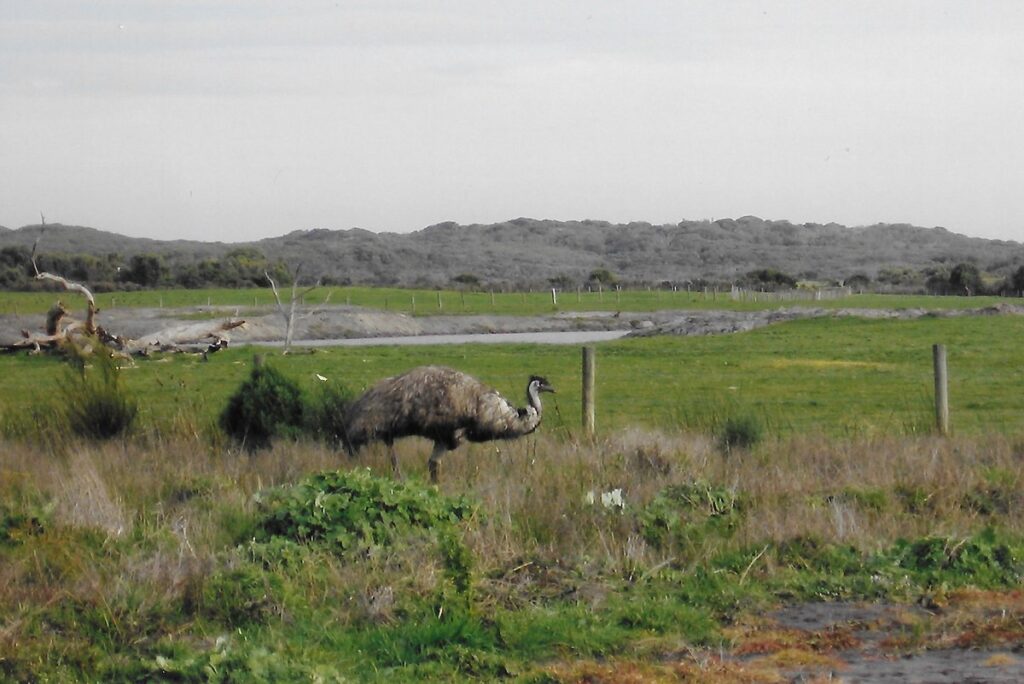
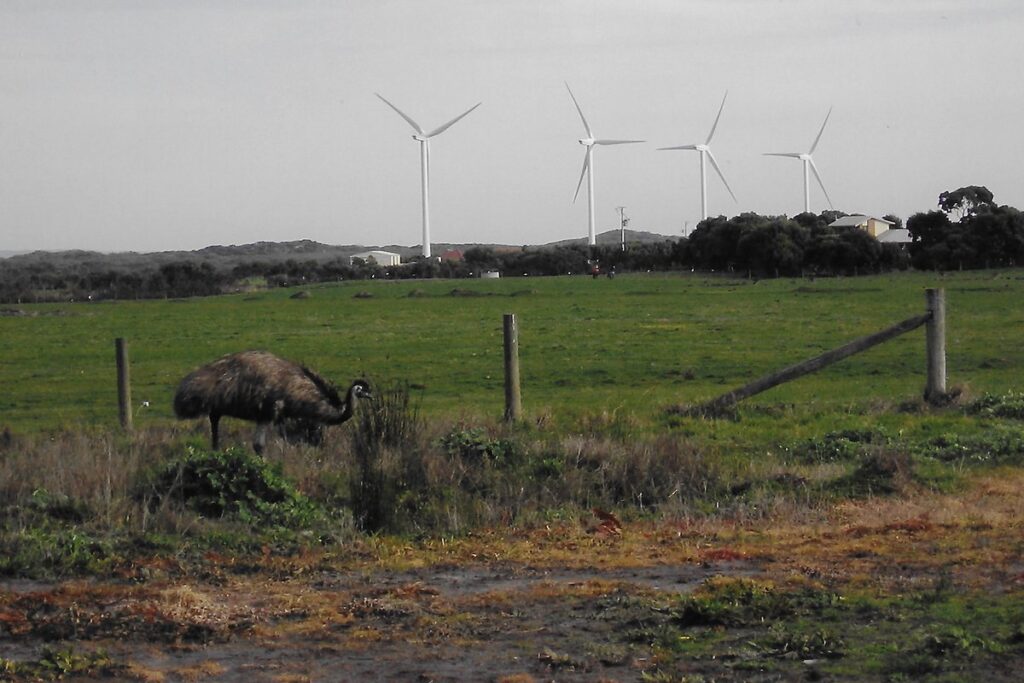
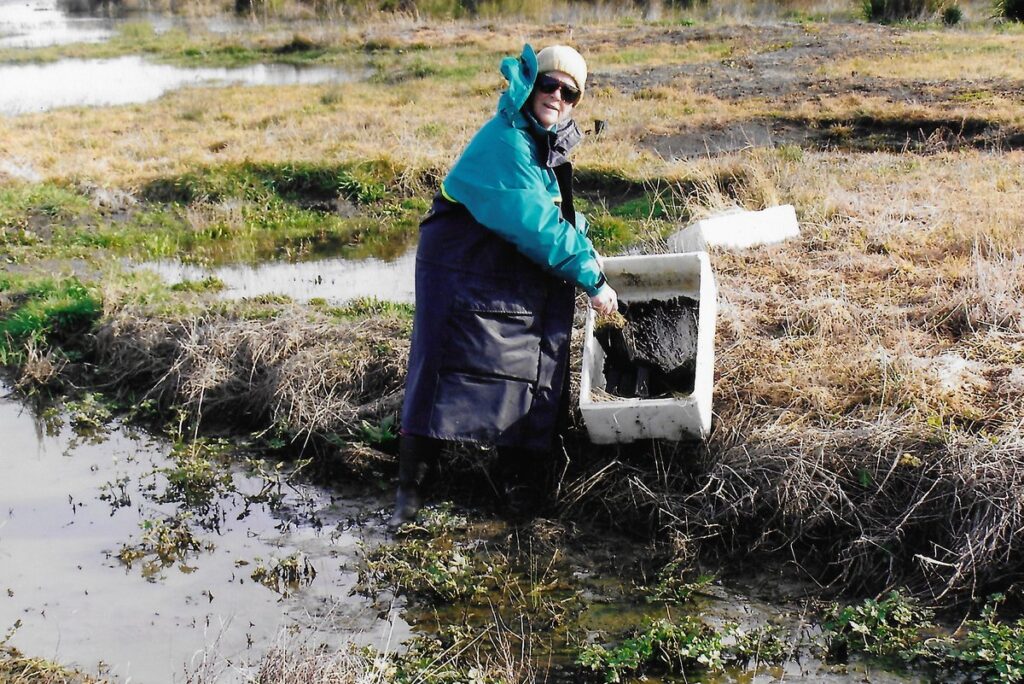
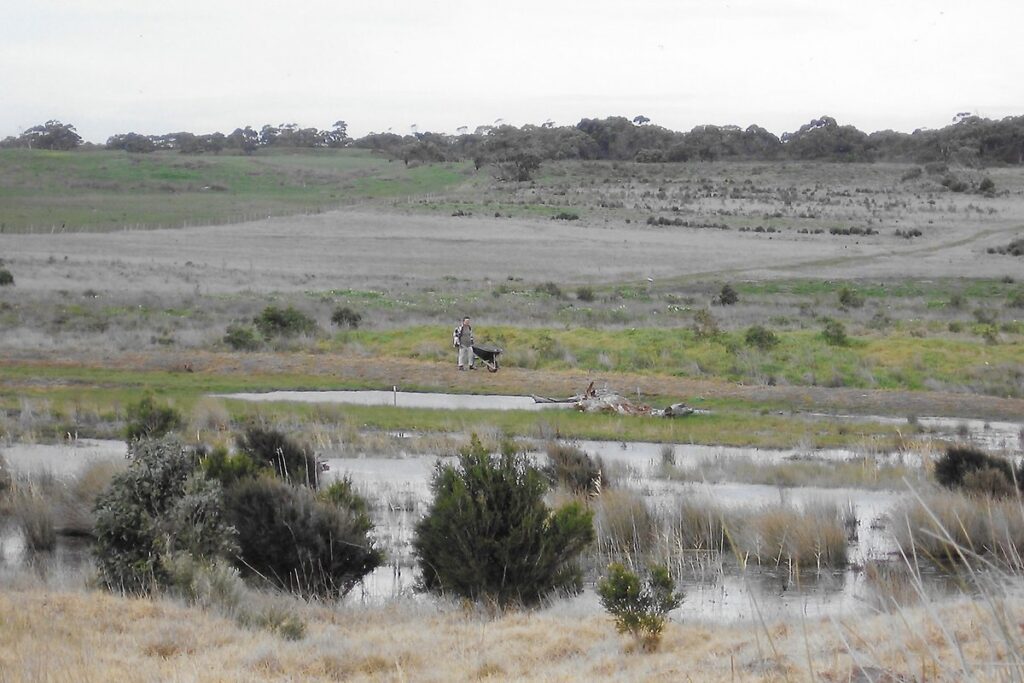
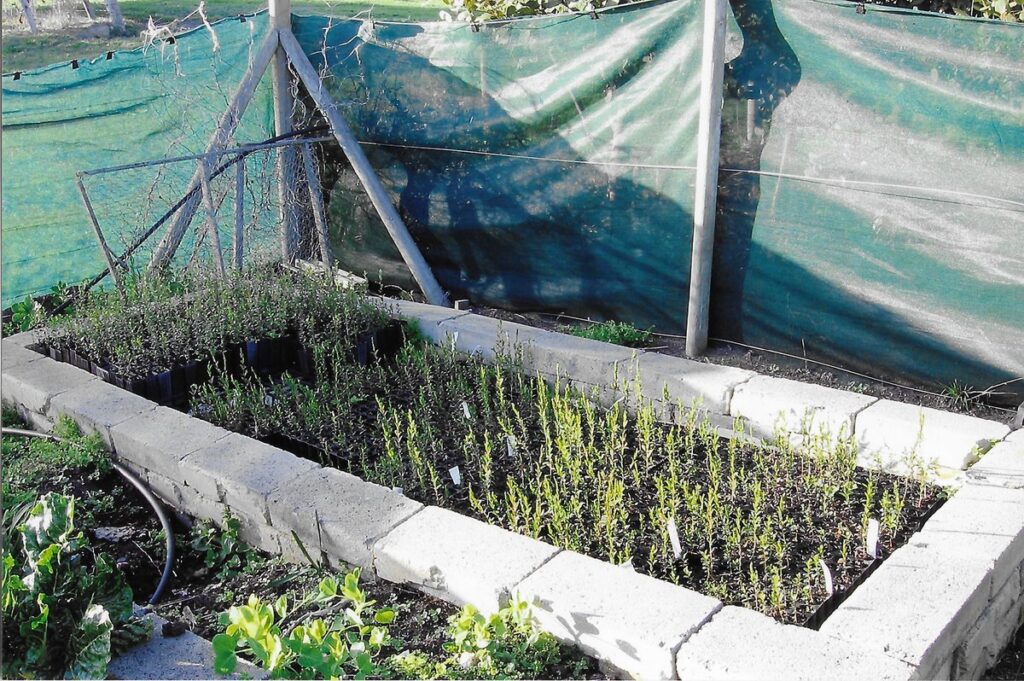

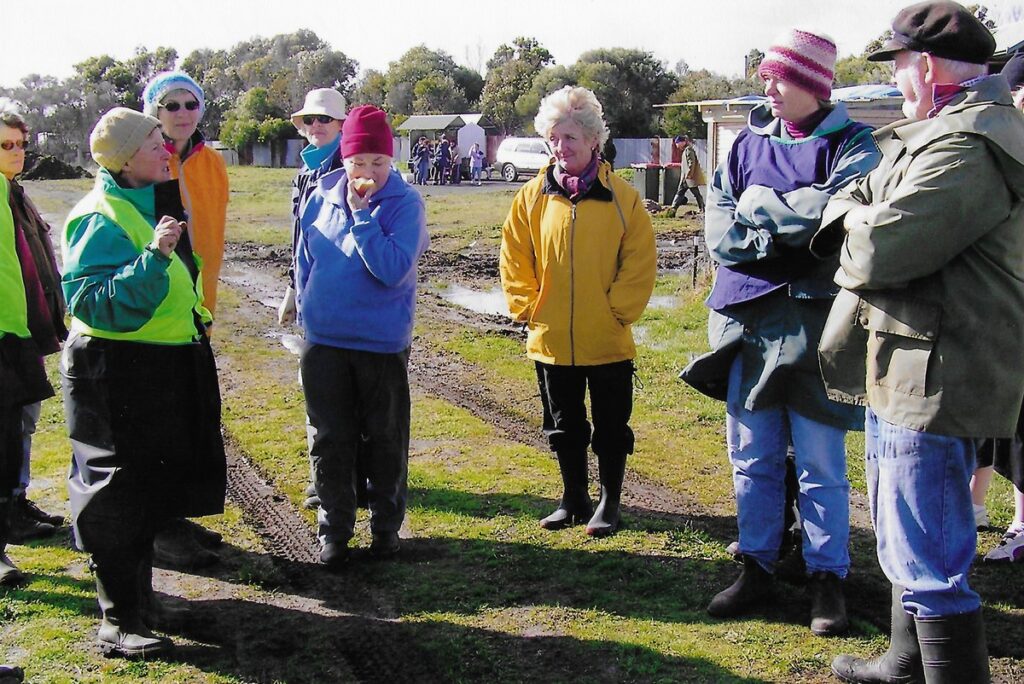
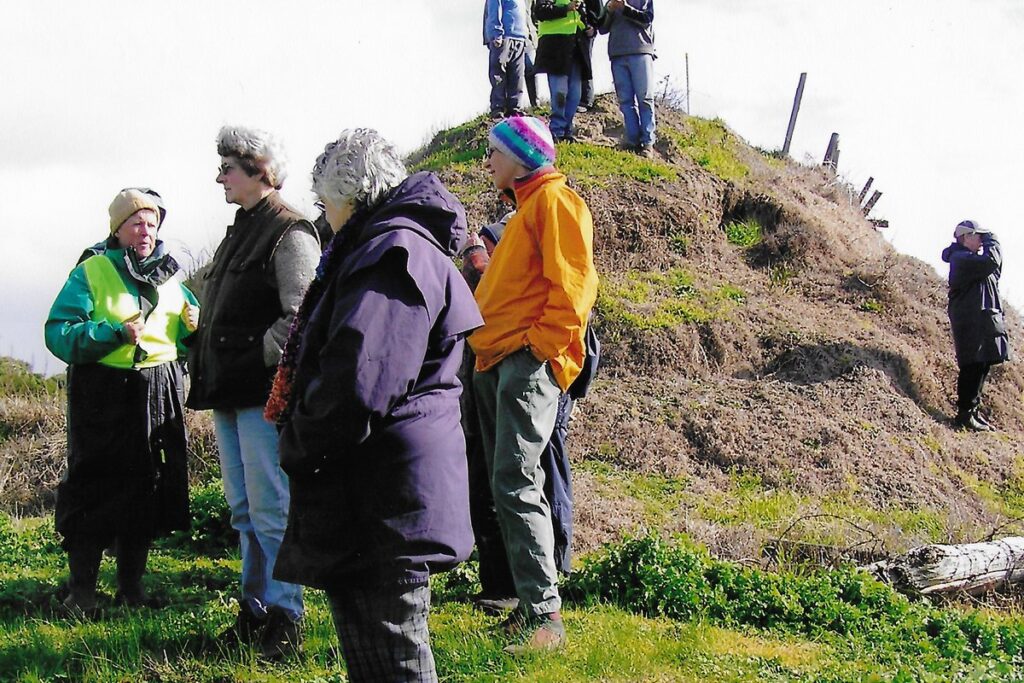
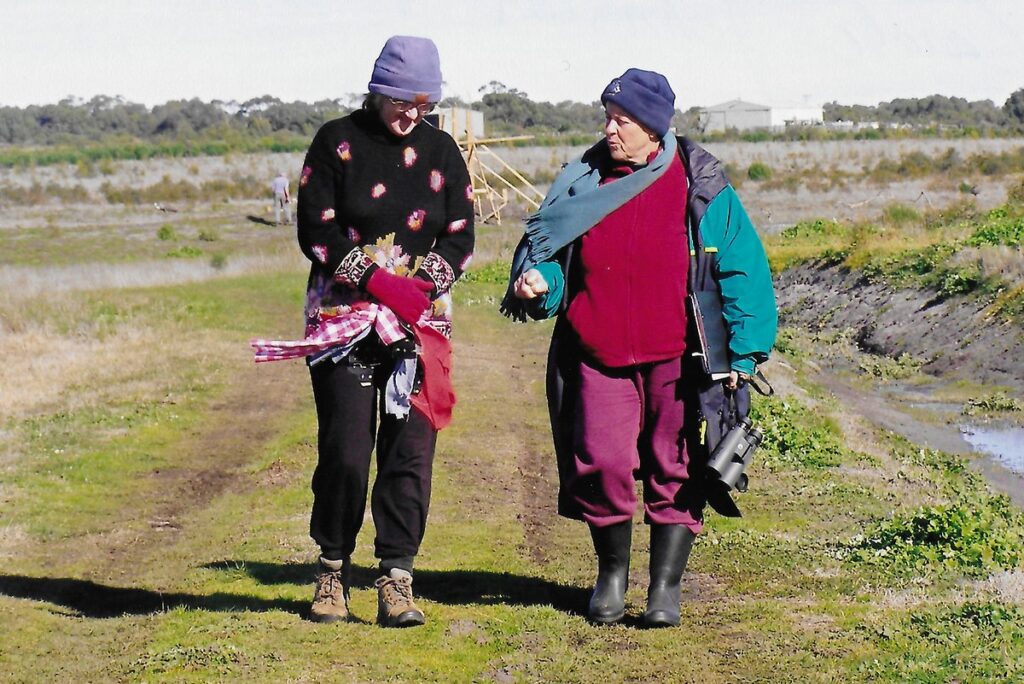
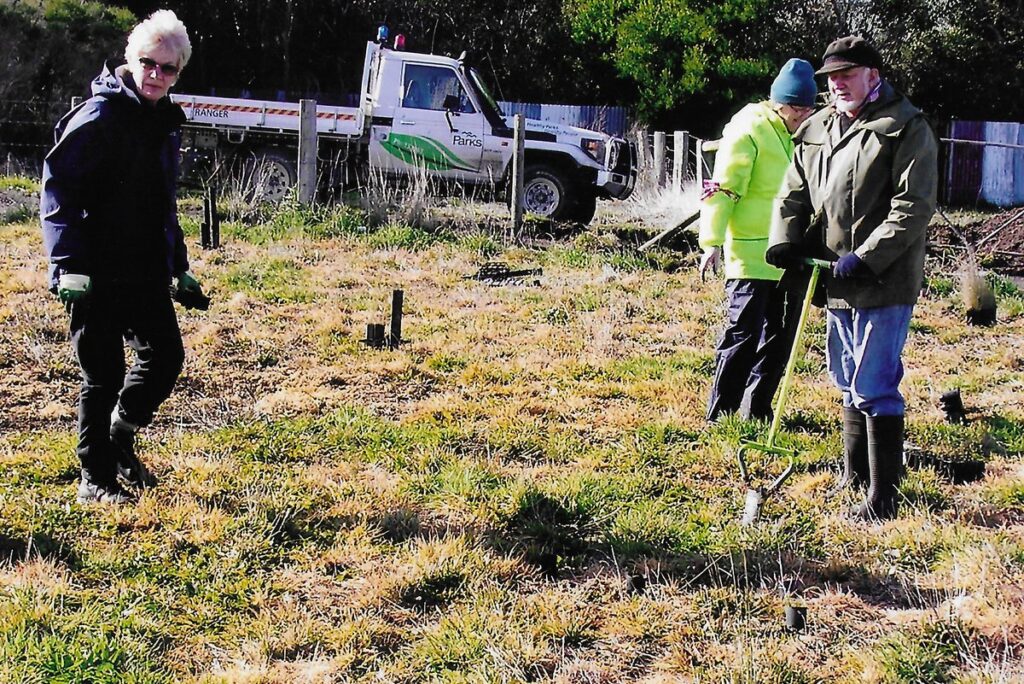


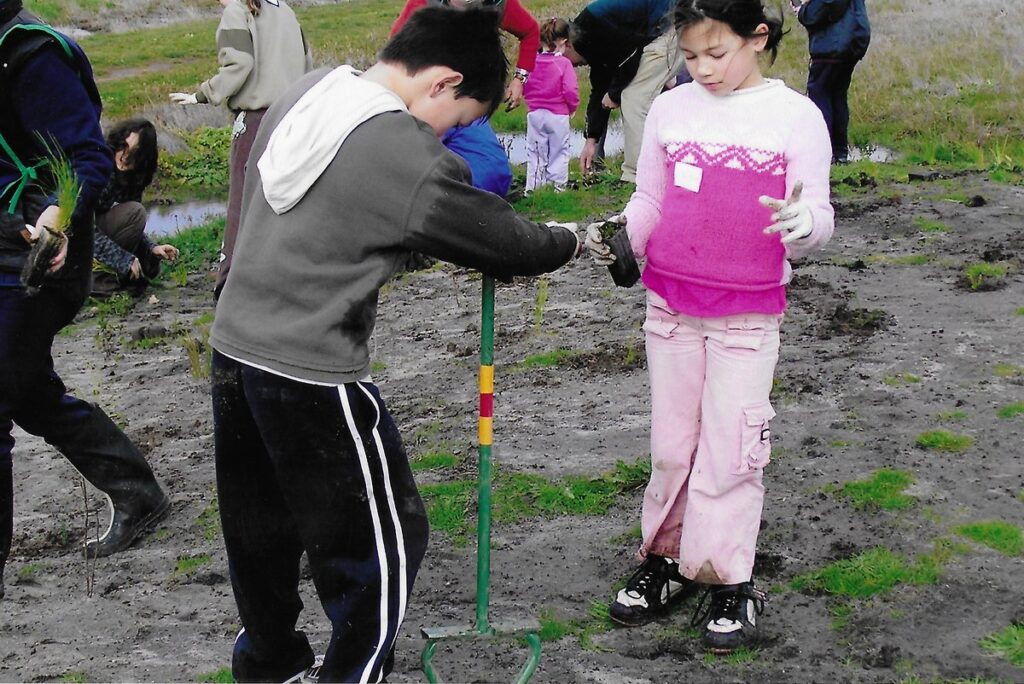
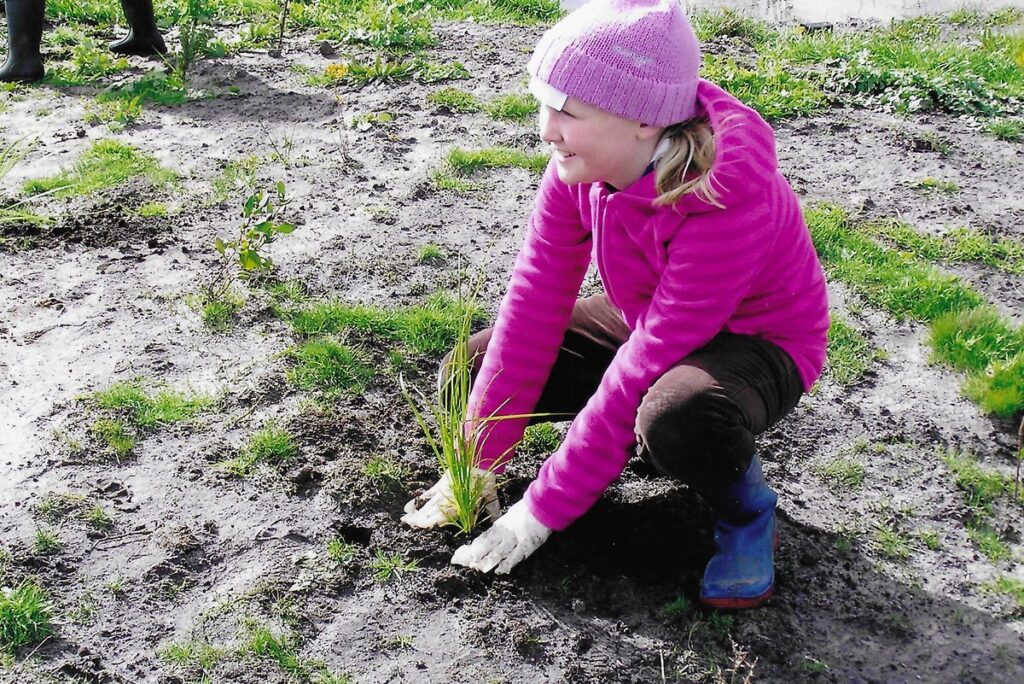
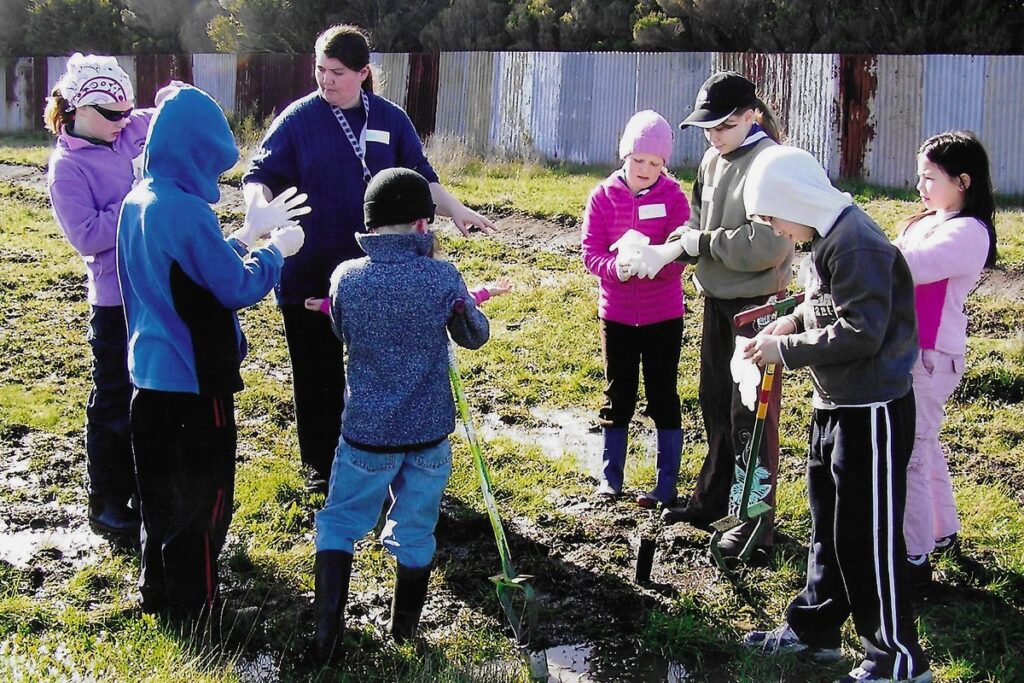
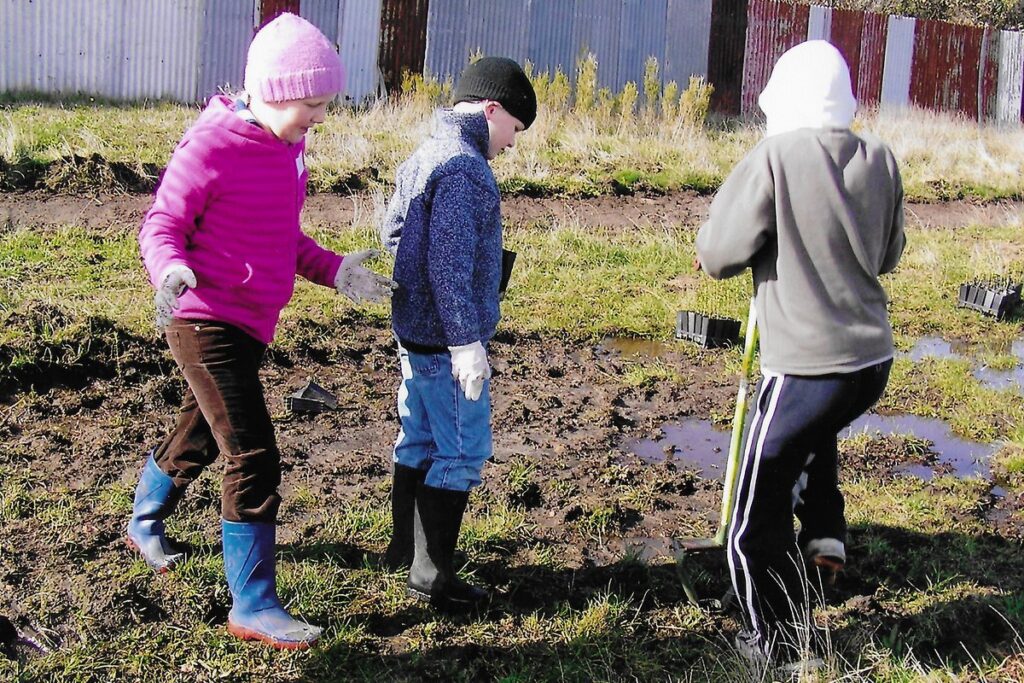

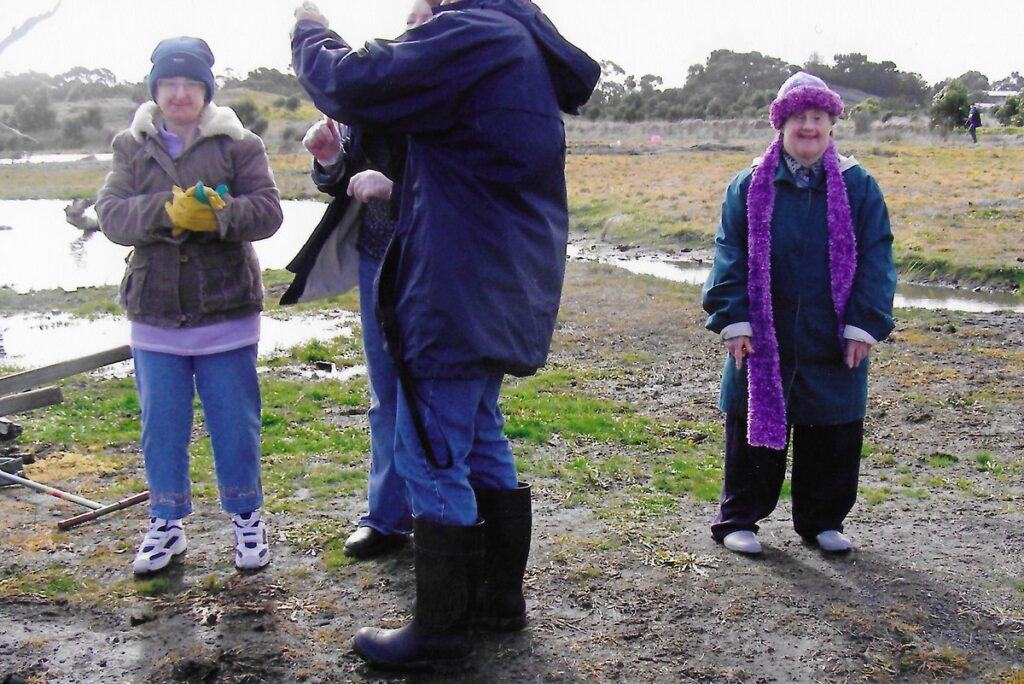
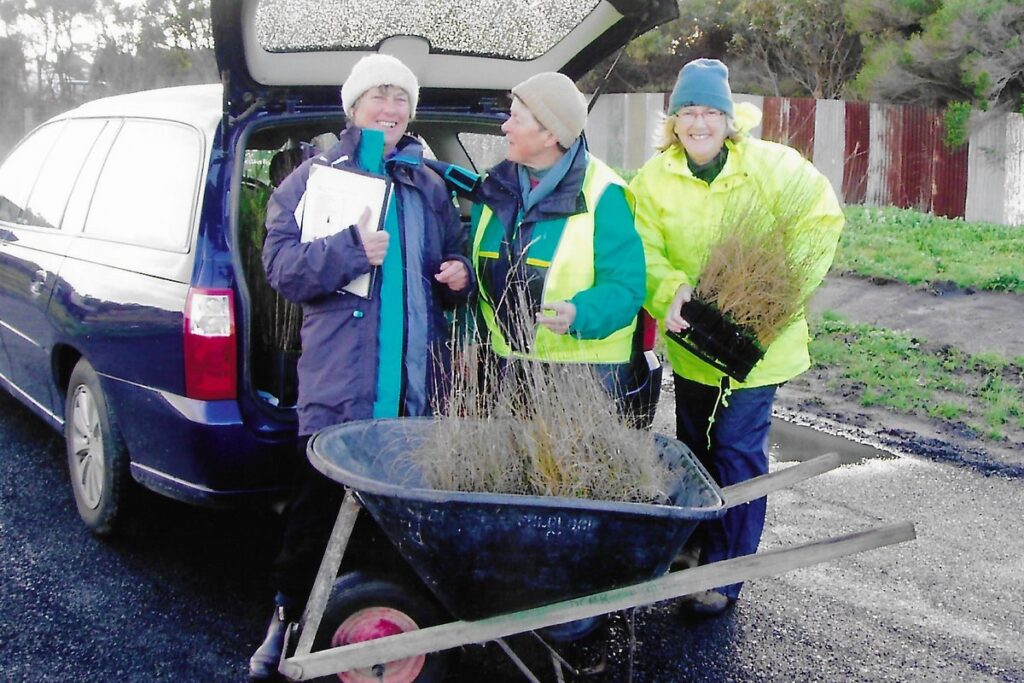
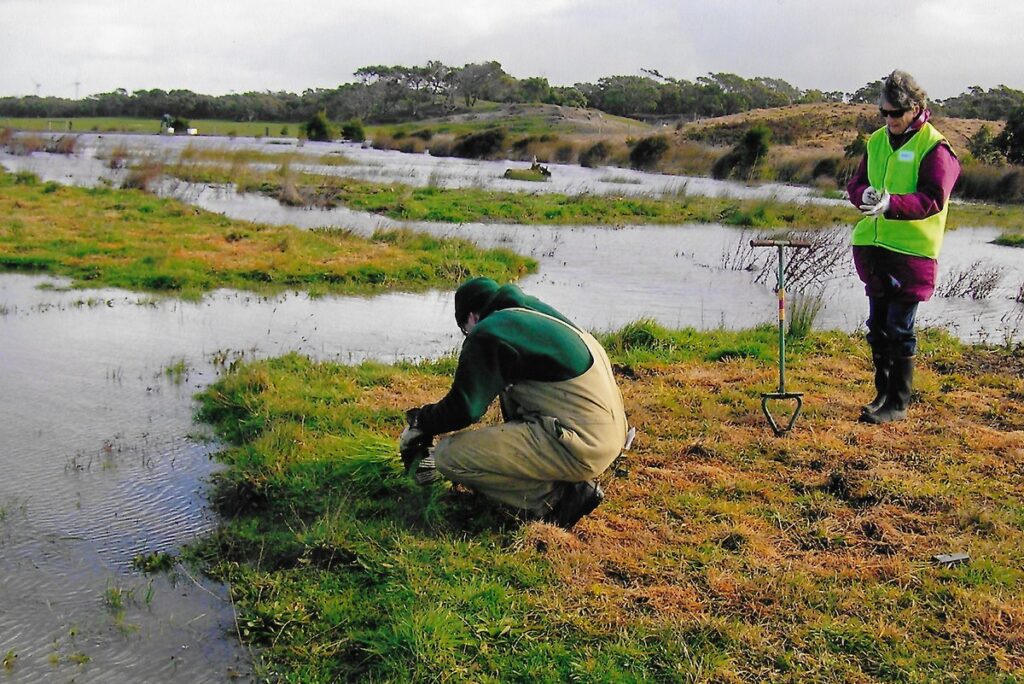

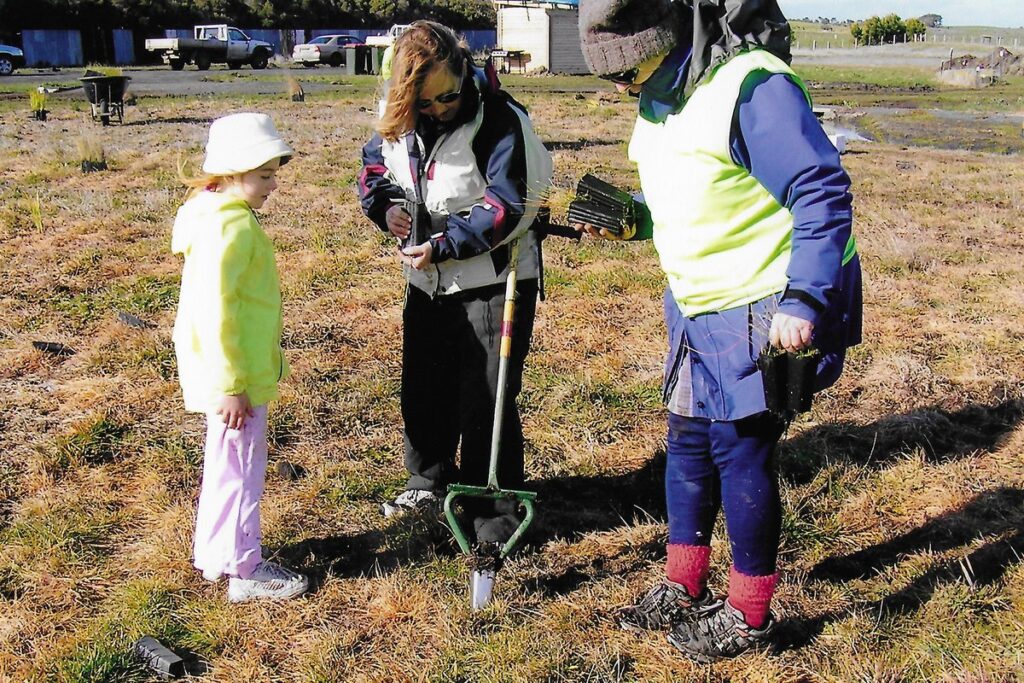
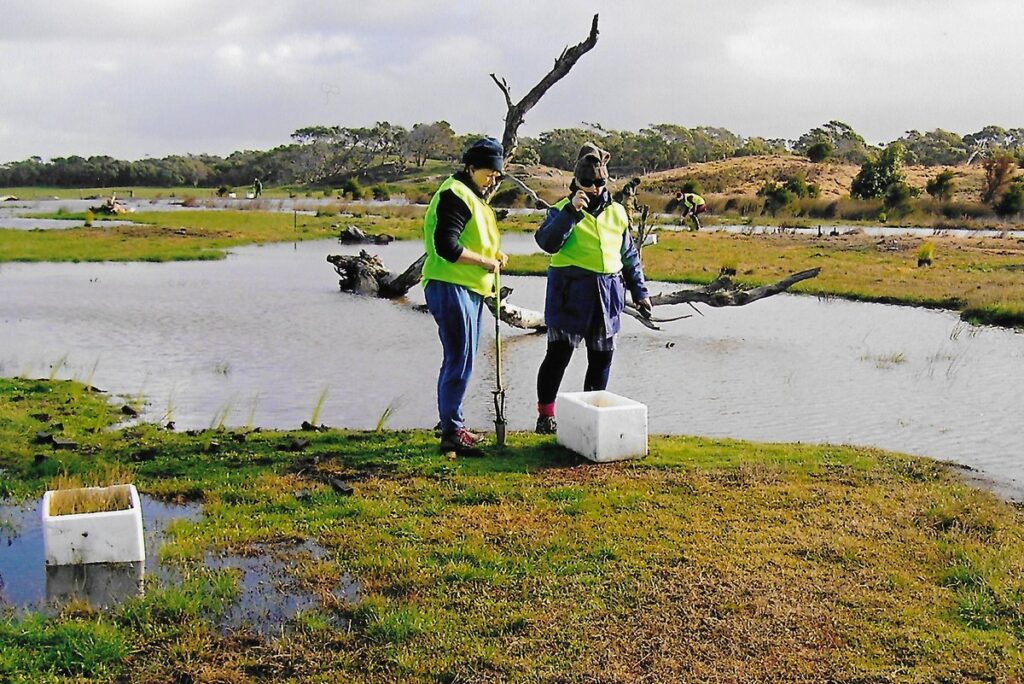
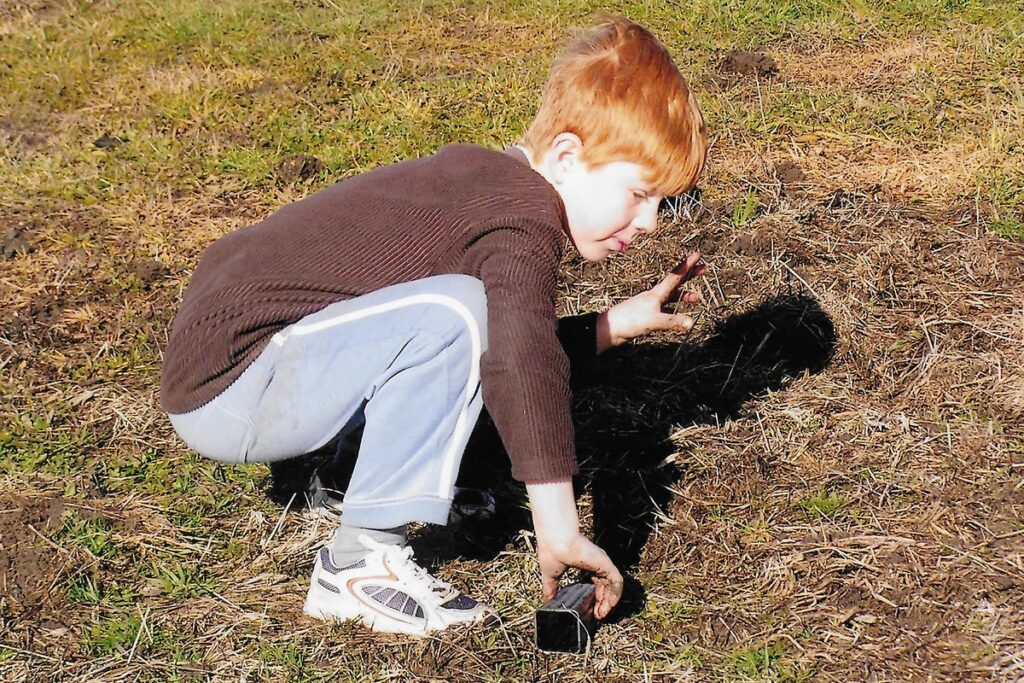
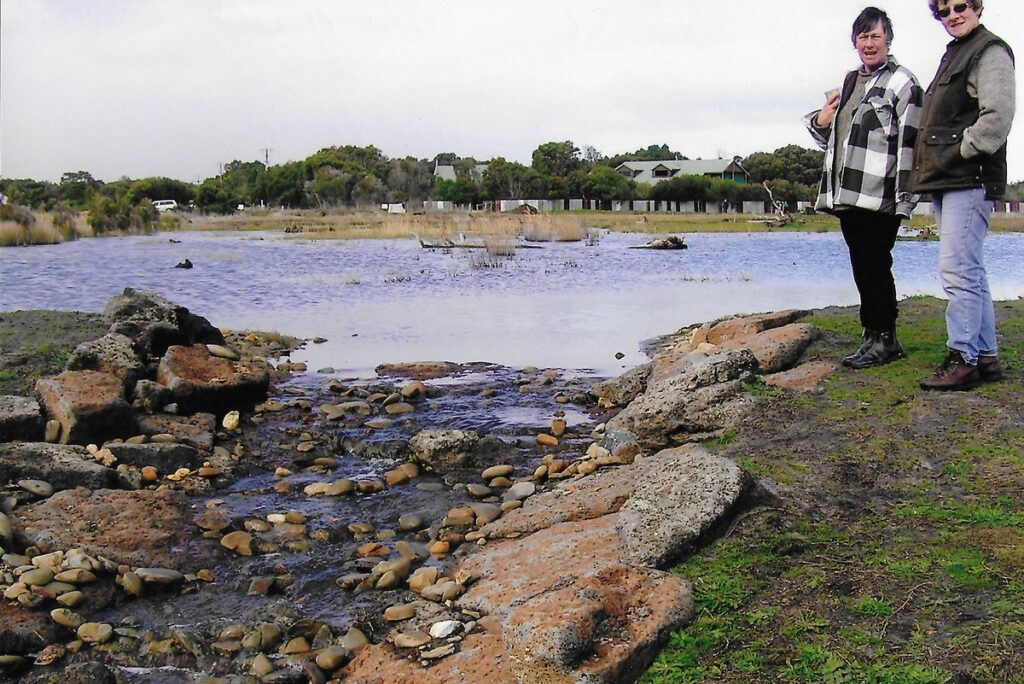
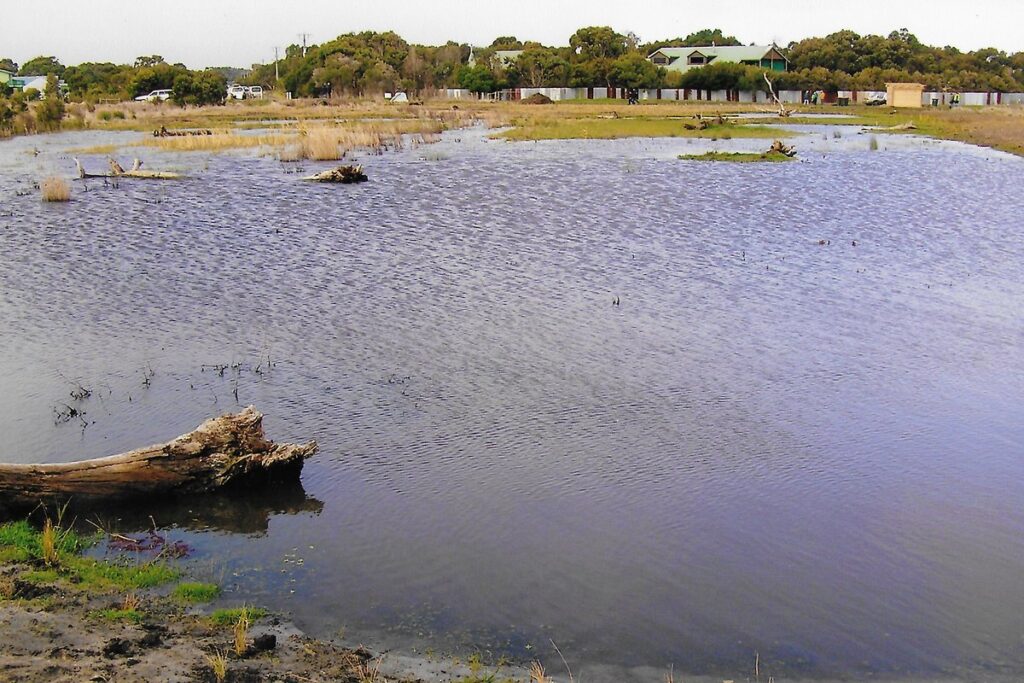
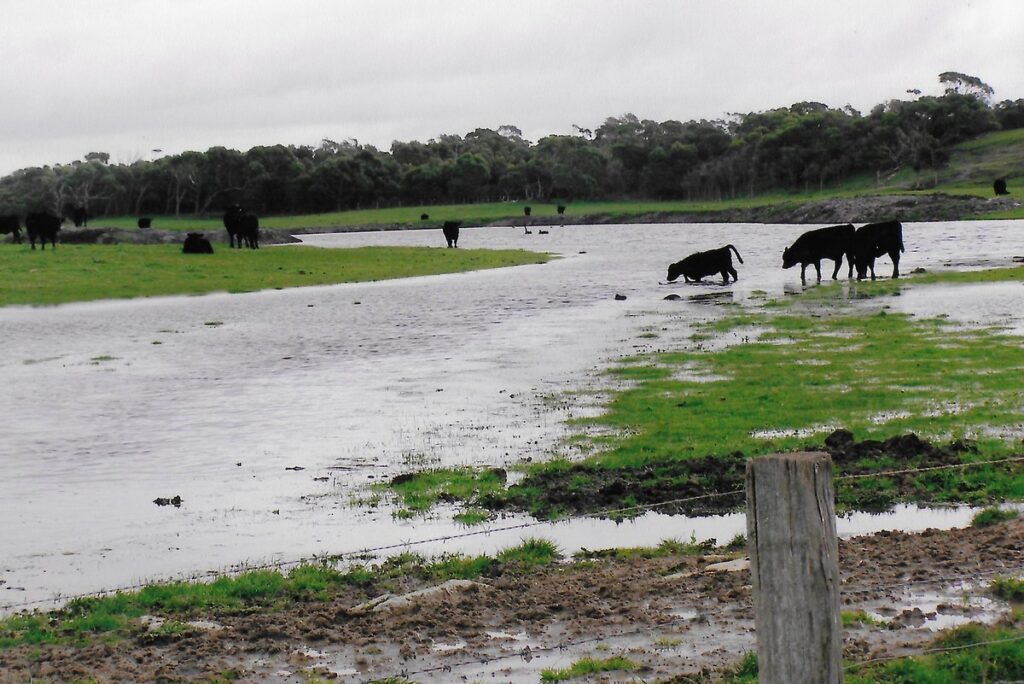
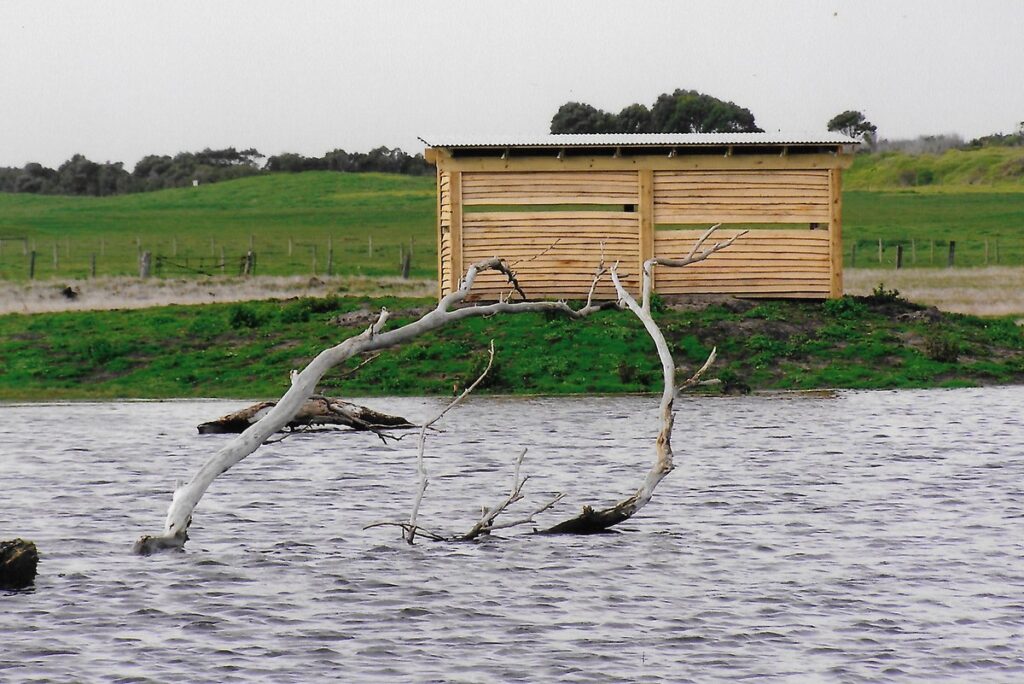






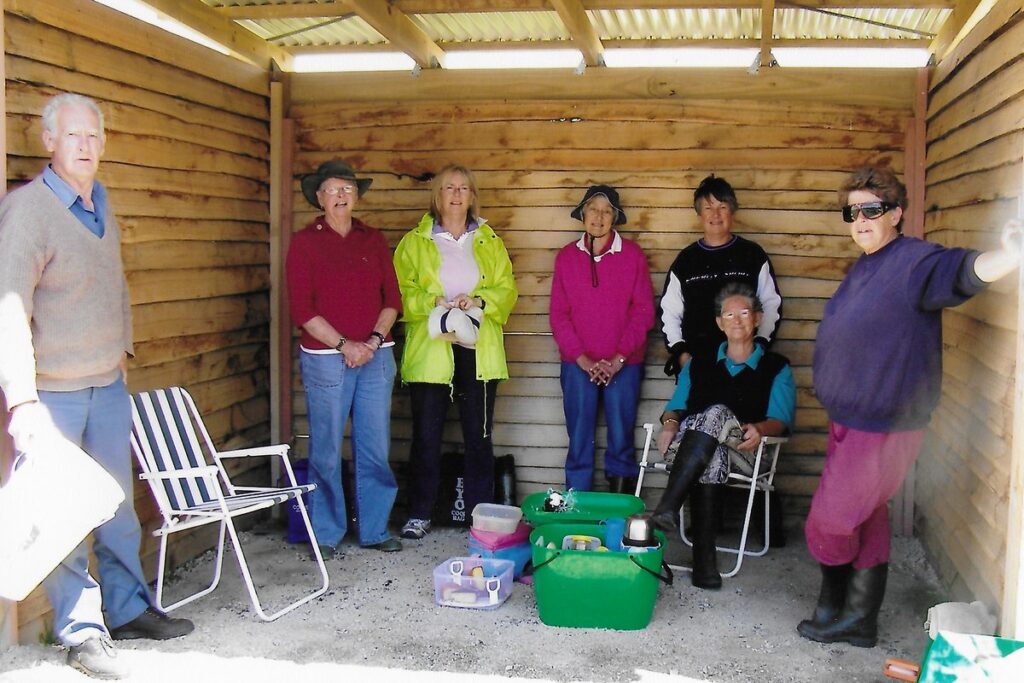
How the wetland works
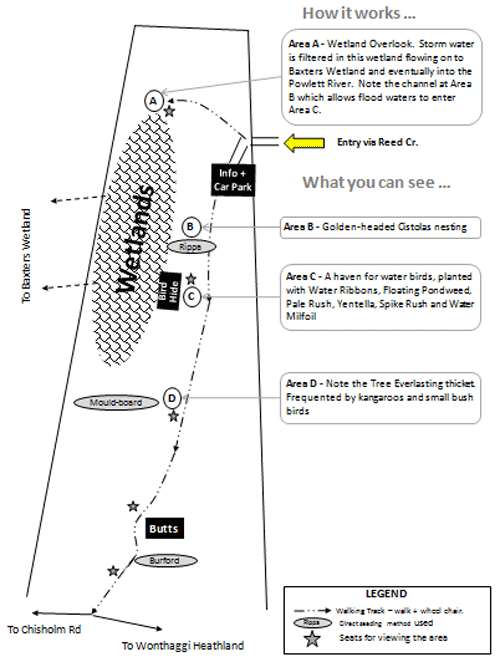
Take a walk
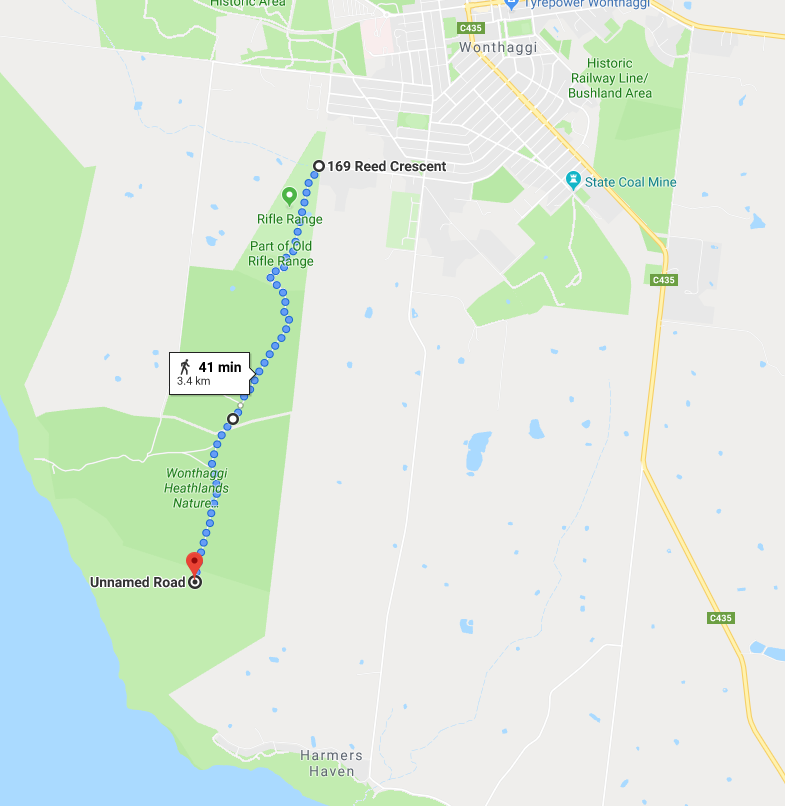
Wonthaggi Heathlands Excursion
Article By Wendy Savage in the Latrobe Valley Naturalist. (Issue No. 575, Dec 2014 Pages 3-4)
Terri Allen lead a group of eighteen of our club members around her ‘patch’. We were a mix of bird and plant enthusiasts, but I have to either look up or down, so this report will be about the plants. Most had travelled down from the Latrobe Valley and Warragul areas and we were pleased to be joined by some members who live down by the coast.
Terri gave us a little background to the site. It was first visited by Hovell around 1827 when he travelled from the settlement at Corinella to Harmers Haven where coal was found. The heathlands were not developed, as they were the drop zone for the Wonthaggi rifle range.
It was good weather for walking around the heathlands, with lots of plants in flower and active calling birds. We walked along the track, which leads to the boardwalk and then on to the beach. Bright colours were provided by Showy Bossiaea, Bossiaea cinerea and two hibbertias, Hibbertia sericea and H. fasciculata. A plant that caused some interest was Myositis australis, the Austral Forget-me-not with its basal rosette of hairy leaves and tall racemes of tiny blue flowers.
Drosera auriculata was flowering, and its small pink flowers had smooth sepals, which distinguishes it from Drosera peltata with hairy sepals. Also, it rarely has a basal rosette, whereas D. peltata does. In other ways, they appear quite similar, both having tall stems and leaves which are auriculate (ear shaped) and peltate (shield like, with the leaf stem in the centre of the back of the leaf). Who knows why they have the different species names, but at least they have reverted to the names given above rather than the long-winded D peltata ssp. auriculata and D. peltata ssp. peltata.
Gahnia fillum, Chaffy Saw-sedge is a gahnia I was not familiar with. It is quite tall, and has the typical long leaves tapering to a long point, but its floral heads are quite broad, whitish and ‘chaff like’. Bassian Dogwood, Pomaderris oraria ssp. oraria was flowering, but its flowers have no petals so are not very noticeable. It has dark green ovate leaves with white underneath and a white edge turning up on the leaf.
Baiba and I lagged behind and lost the group, so walked down to the beach where we saw Pimelia serpyllifolia, with tiny clusters of yellow-green flowers on the branch ends. Another plant that attracted our attention had a low growing matt of leaves with white notched 4-petalled flowers, with green sepals between them. It was only a weed, but turned out to be Sea Mouse-ear, Cerastium diffusum. We commonly see Mouse-ear Chickweed, Cerastium glomeratum but it differs in being a taller plant with larger leaves and 5-petalled flowers. The rest of the group saw orchids on the return – Donkey Orchids, Diuris orientis and the Slender Greenhood Pterostylis foliata.
After lunch back at the car park, we walked the perimeter of the main block along a track that was slashed along its edge, providing a variety of shrubs, herbs and orchids. Here we saw Blue Stars, Chamaescilla corymbosa, Brown beaks Lyperanthus suaveolens, Red beaks Pyrorchus nigricans, two of the rare Eastern Spider Orchids Caladenia orientalis, Wax Lips and more Donkey Orchids.
A swampy section of track yielded Swamp Boronia Boronia parviflora, Pygmy sundew Drosera pygmea, a patch of yellow button flowers of Water Buttons, Cotula coronopifolius and one of my favourite tiny plants the Tiny Violet, Viola seiberiana. I did not find another little plant that Terri had shown me growing here previously – Stylidium inundatum, Hundreds and Thousands. It is easily overlooked, and has a basal rosette of pointy reddish succulent leaves and minute white flowers on a stalk. It is one of the trigger plants but it must have a tiny insect to pollinate it.
Terri remarked on how few orchids there are in the heathlands compared with when she used to play there as a child and would pick bunches to take home to her mother. Cattle grazed the heathland then, and now Coast Tea tree has encroached and the burning regime has made the vegetation impenetrable leaving less space and light for the orchids.
It’s a lovely place to visit and we enjoyed our day.
Newspaper articles
2007 – State award for rifle range rehab
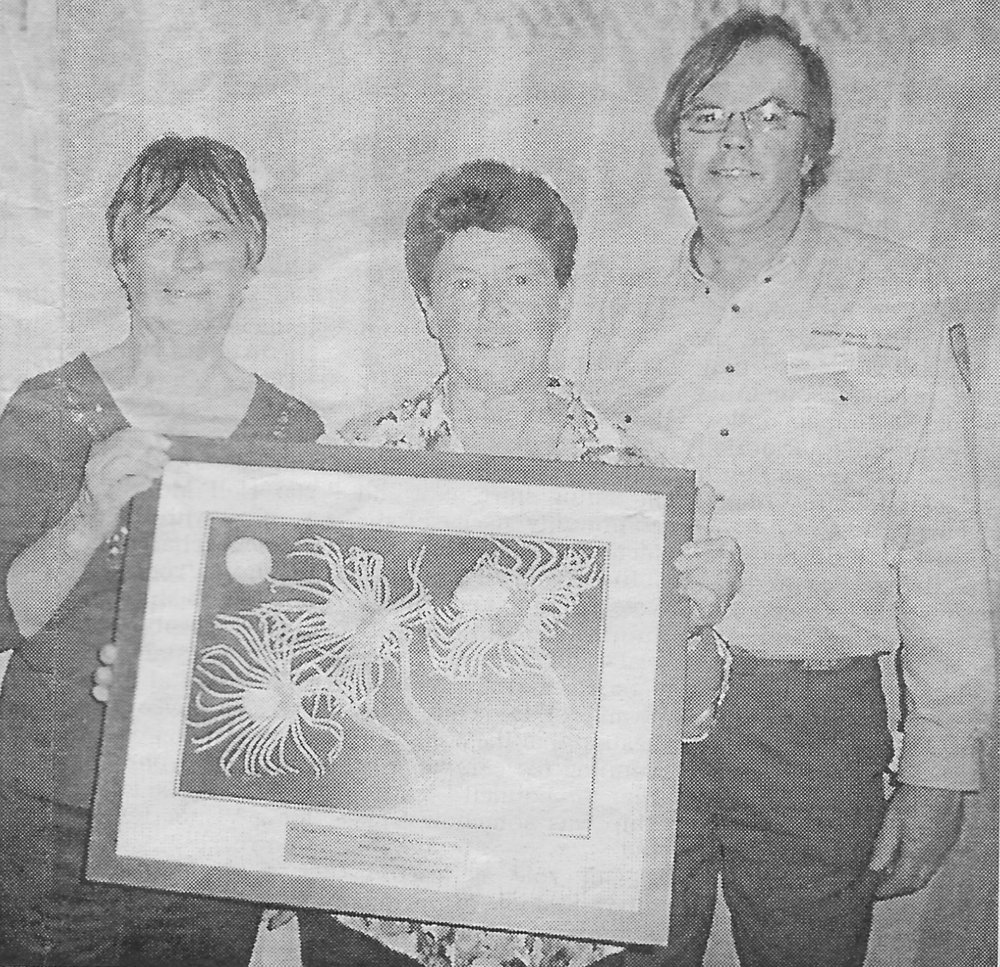
“Environment Minister John Thwaites presented us with the award, as well as a photo of a new hydroid species discovered off French Island.”
Two Bass Coast conservation groups have won a Victorian Coastal Award for Excellence, in recognition of their work on rehabilitating the Wonthaggi Rifle Range.
The Friends of the Wonthaggi Heathlands and Coastal Reserve and Cape Paterson Coastal Plains Landcare were recently announced as the state winners of the water quality category.
Terri Allen from the friends group said that volunteers had created a wetland on denigrated land, and planted 7,000 trees and 12,000 wetland plants.
“We took over the defunct rifle range area in 2005, and obtained three grants as part of the Commonwealth Games tree planting scheme,” Terri said
“We direct-seeded 23 hectares of land, and more than 40 kilograms of indigenous seed were collected for the project.
“The area is now being used by both Greening Australia and Landcare groups for educating farmers on the benefits of direct seeding.
“It is one of the biggest direct-seeded areas completed anywhere.”
“In 18 months, some of the plants have now grown over two metres in height, despite the drought.
“The area abuts the Wonthaggi Heathlands, so people can walk right through the area, with great bird watching,” Terri said.
In 2006, the work of the dedicated volunteers continued when they obtained a government water grant.
“We have now had the earth work completed for two wetlands in the area, which is stage two of the project,” Terri said.
“Stage three is constructing walking tracks, an education shelter, signage, bird hide, and car parking which we are currently working on.”
Dan Drummond from Parks Victoria has also been enthusiastically: involved in the project.
He said that the rehabilitation of the site would contribute to the sustainability of the coast in a number of ways.
“Water flows out of a combination of urban and rural wetland. Prior to this project stock had direct access-to the waterway.” Dan said.
“The termination of grazing has had a direct improvement on water quality on site.
“All locations downstream will experience the benefits of this high-quality water when the wetland is in operation.”
Terri attended the recent coastal awards ceremony in Melbourne with Dan and Jenny Rejske from Cape Paterson Coastal Plains Landcare.
“We just didn’t believe it when we won,” Terri said. “We thought we were just going down there for a nice dinner. “Environment Minister John Thwaites presented us with the award, as well as a photo of a new hydroid species discovered off French Island.”
The groups were also. thrilled to note that a number of other Gippsland groups were listed as finalists and were also award winners.
Terri announced that the next big step for the project will be a community tree planting day on July 28, 2007.
2009 – Wonthaggi to become a leading green oasis

An ambitious project that will put Wonthaggi on the map as the only town in the nation to be completely surrounded by wetlands and natural environment was presented at last week’s Bass Coast Shire Council briefings.
‘Wonthaggi Greenbelt’ put forward by an entourage of local environment groups impressed councillors and the public at the briefings.
The council heard that it is possible to proceed with such a plan because of the large amount of public land surrounding the town thanks to the coal mining history.
The project involves the re-vegetation of land to form a green belt of open space and flora and fauna reserves around the town.
The Wonthaggi Seed Bank, Friends of the Wonthaggi Heathland and the Wonthaggi Urban Landcare Group came up with the idea.
Parks Victoria will assist with the scheme as well as a further 15 community groups that will be involved in the project.
Number 5 Brace area will be the first of several projects to take place in the next 10 years, along with Baxters Wetland and Carney’s Road.
A motion to give the project council support will be put forward at the next council meeting.
More: Hidden Gem | Wetlands Enhancement | Walking Wonthaggi’s Wetlands | History
